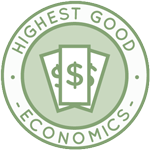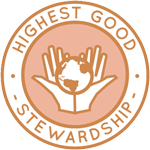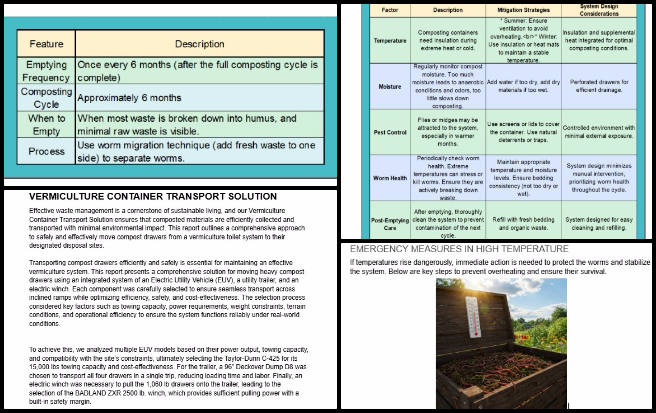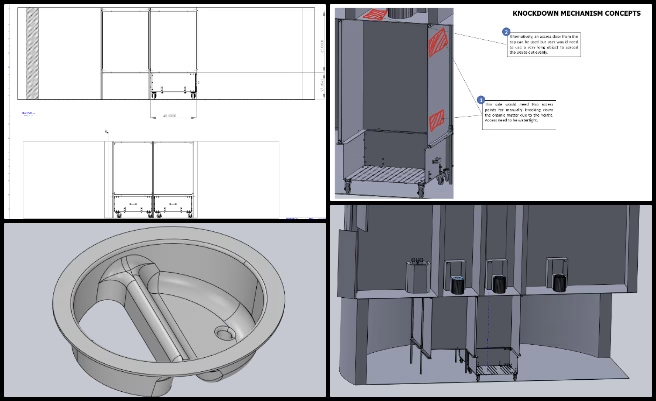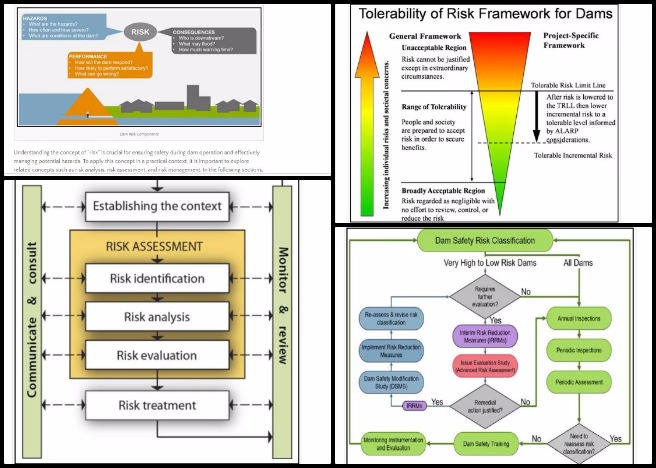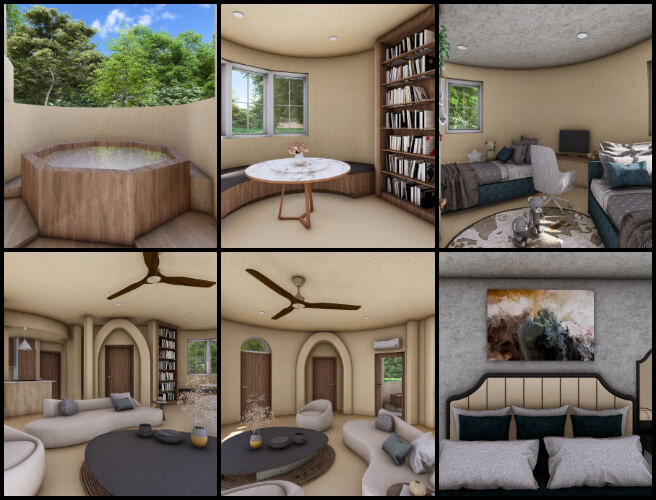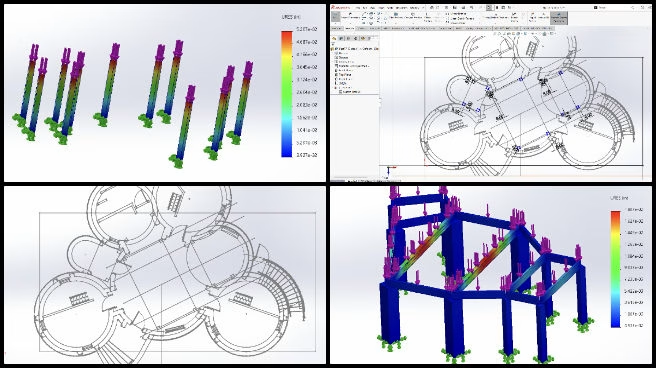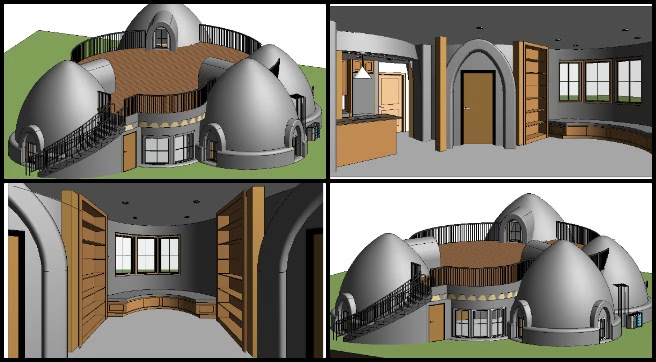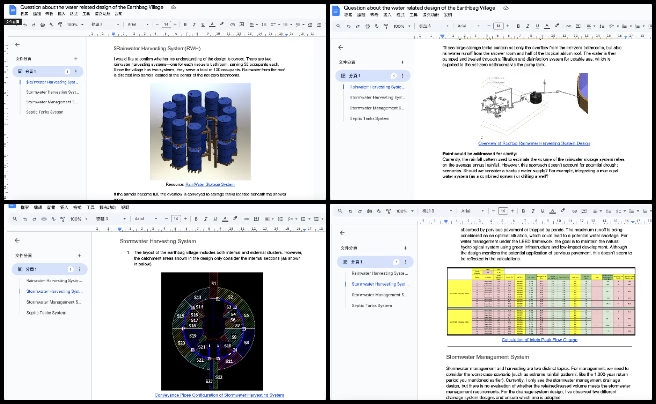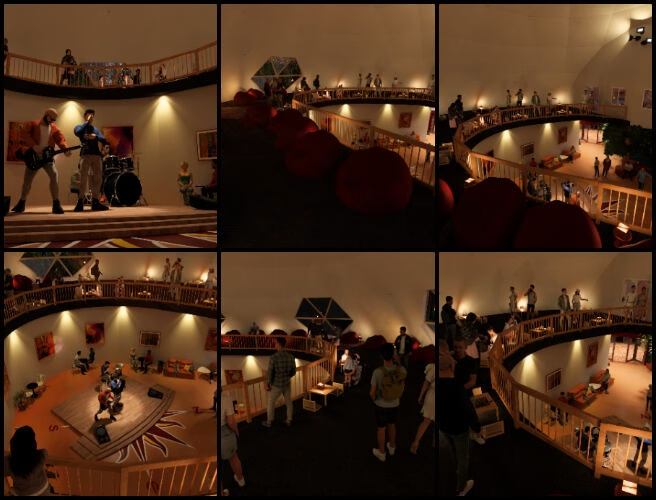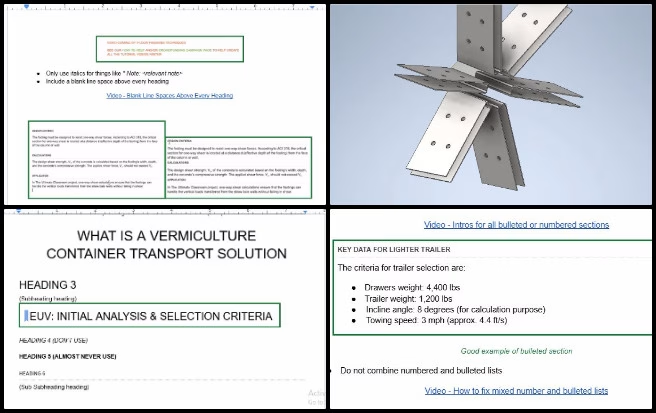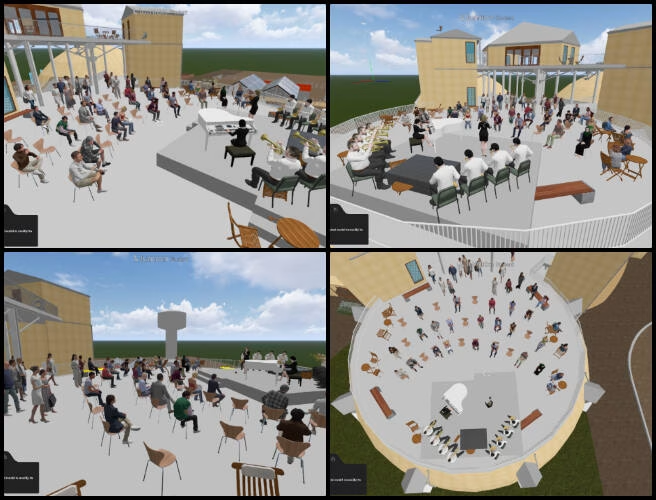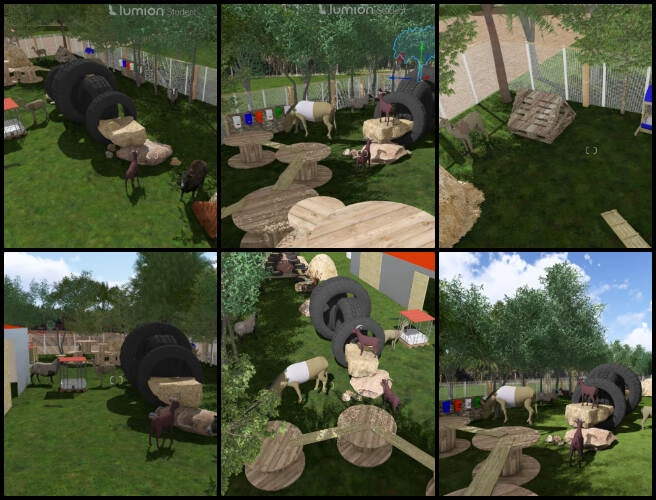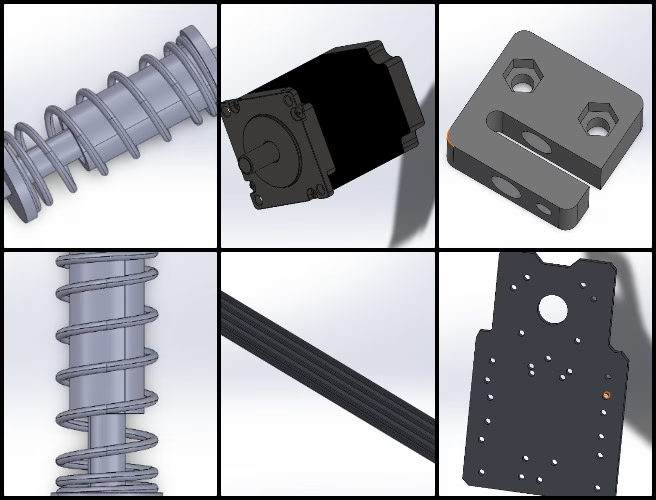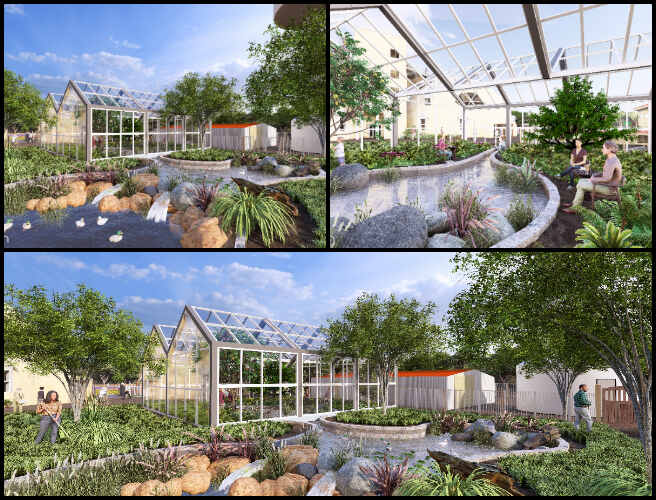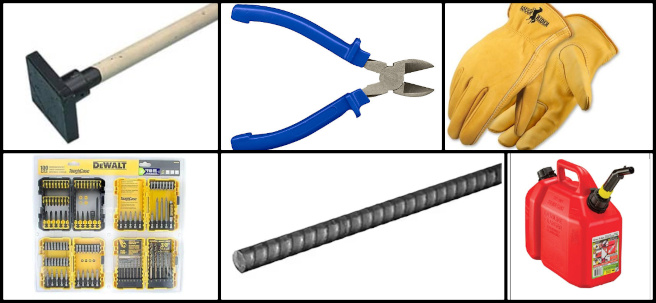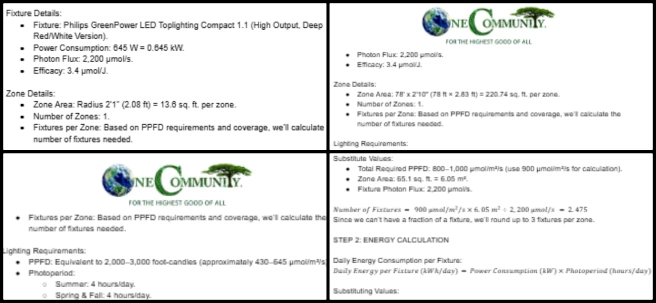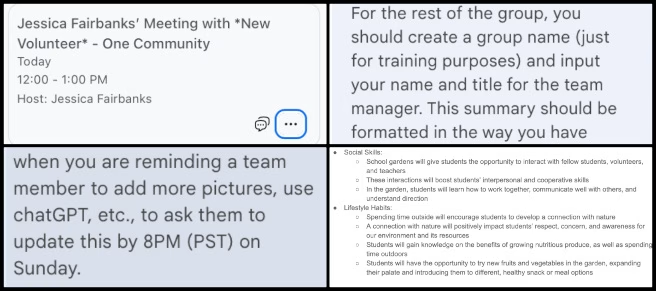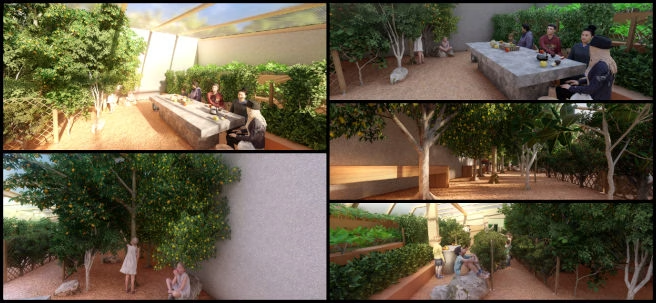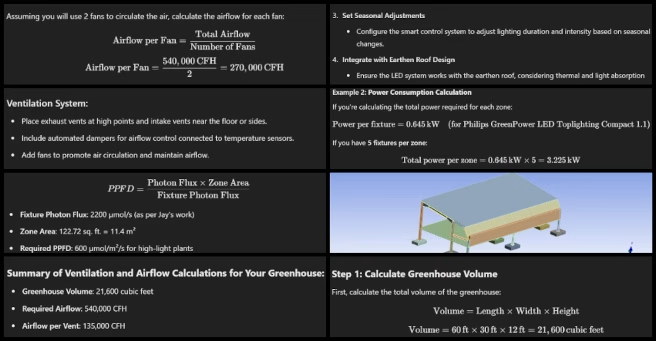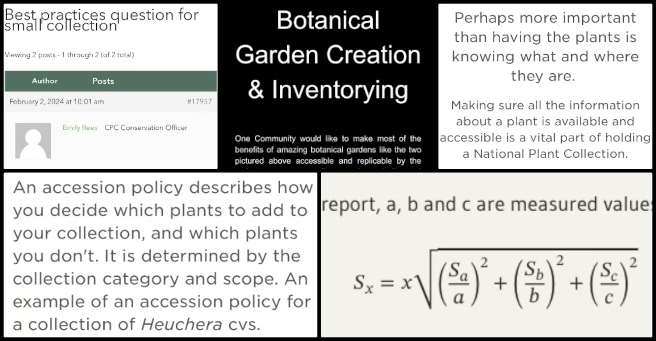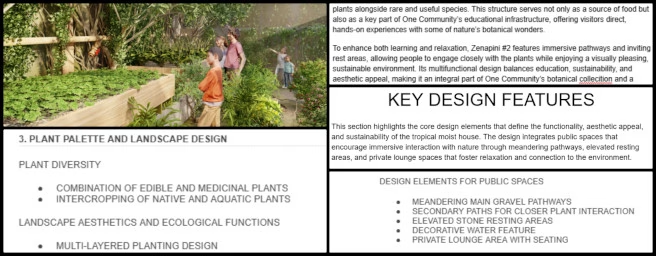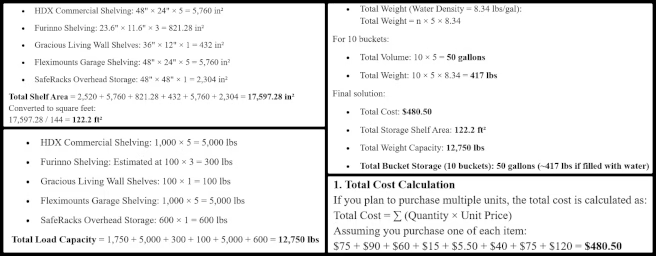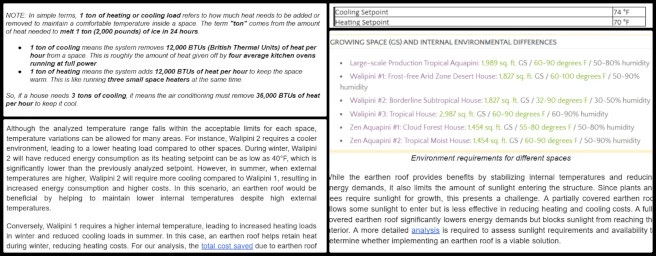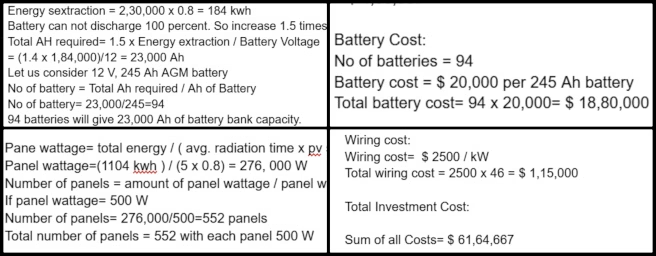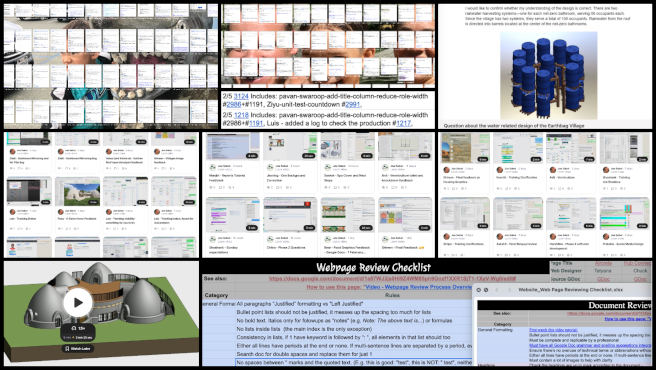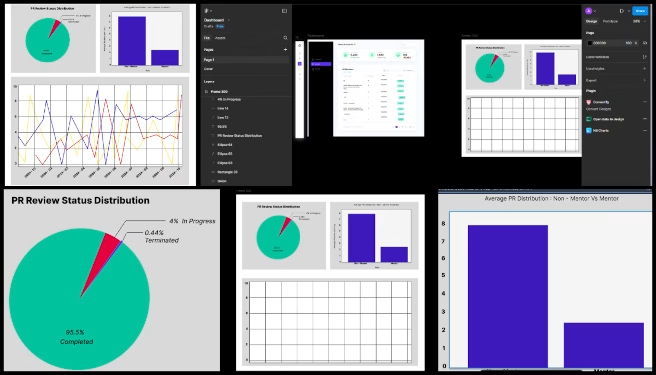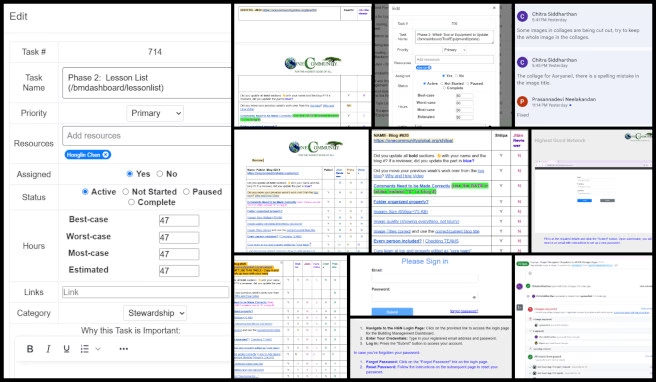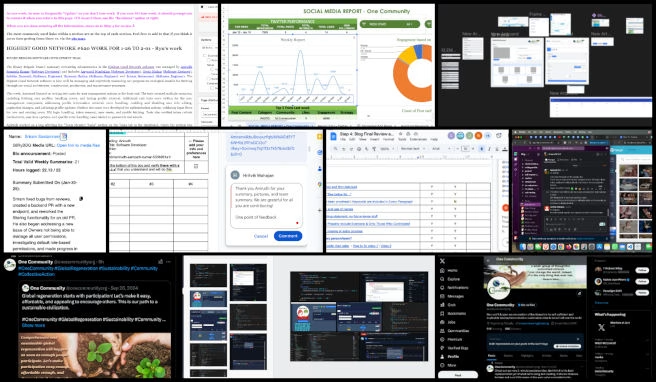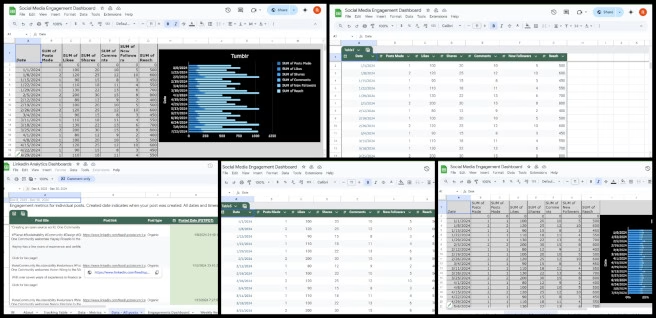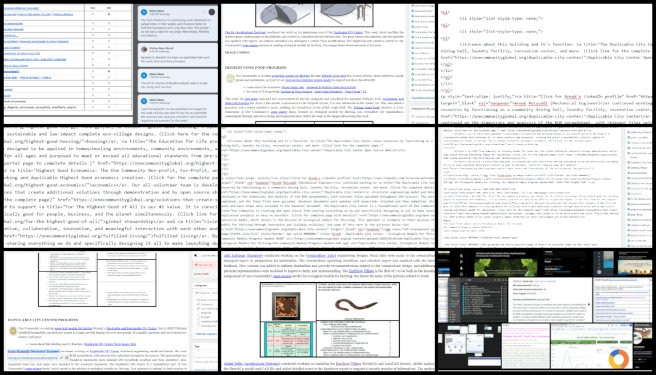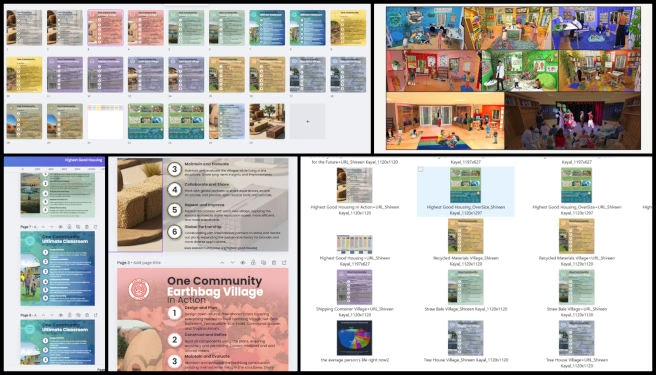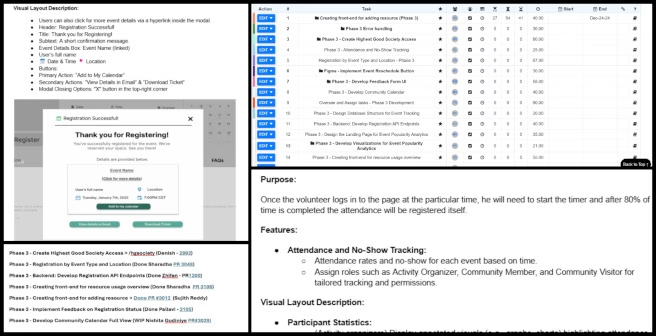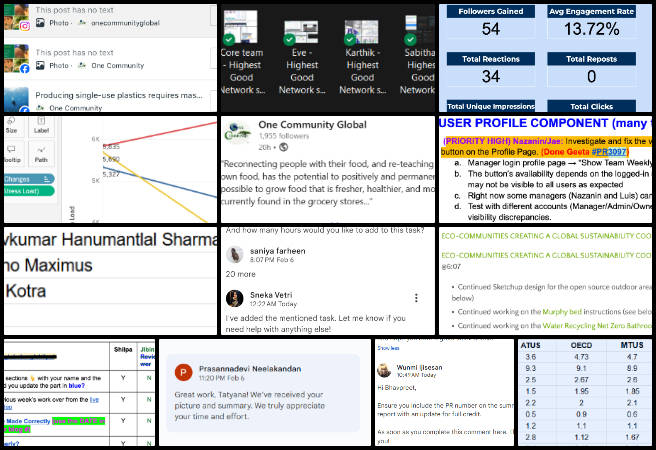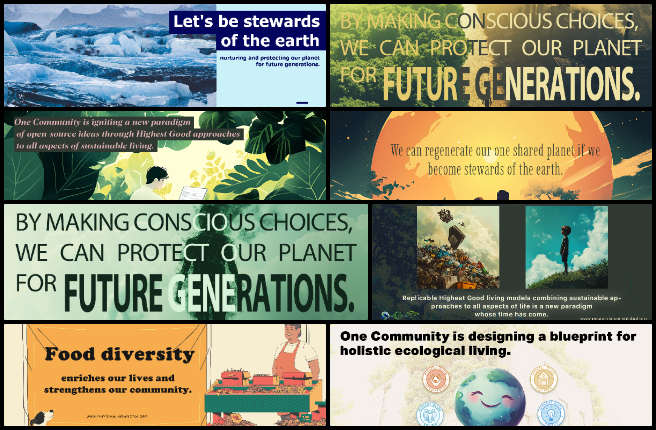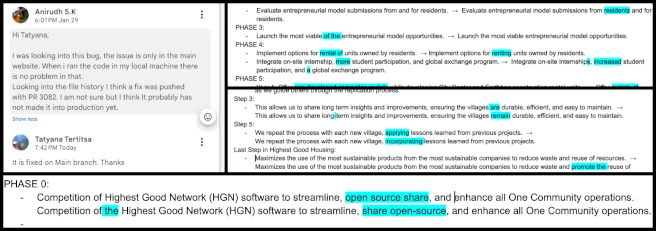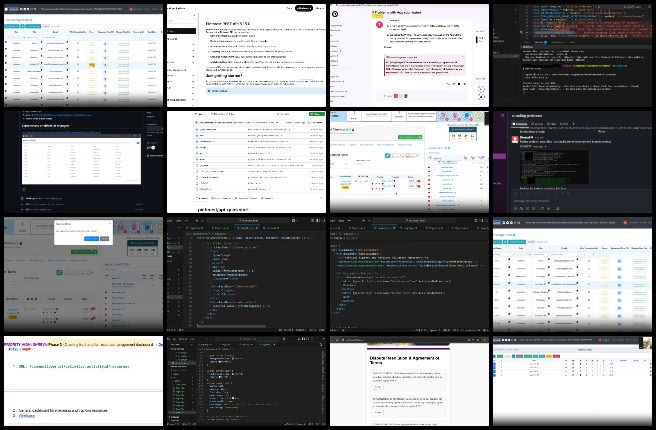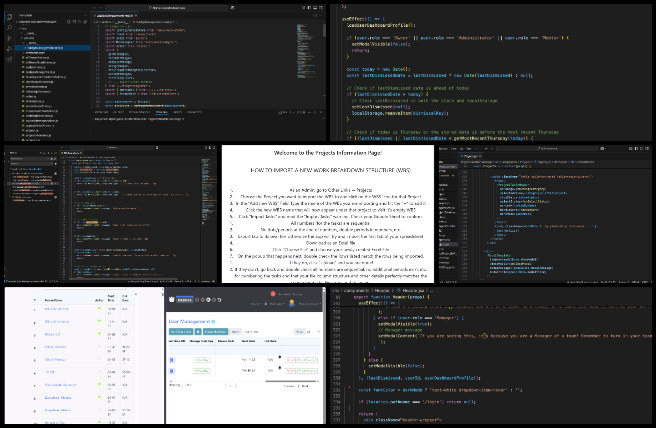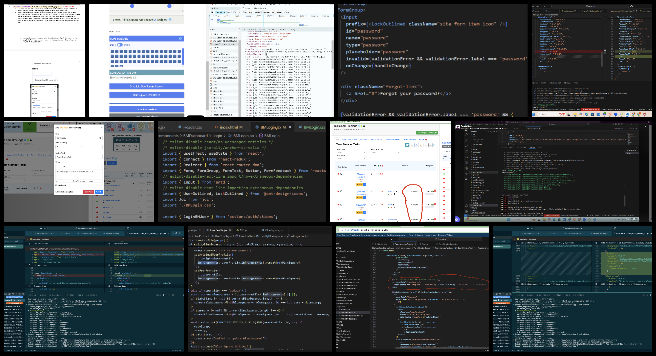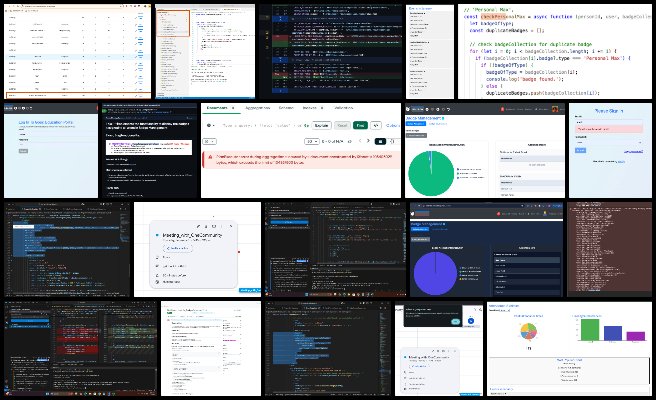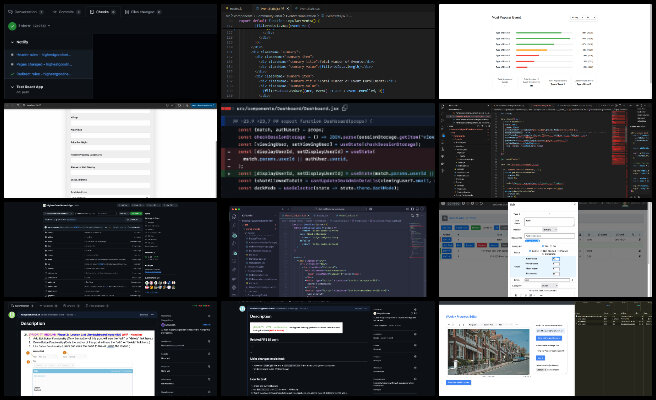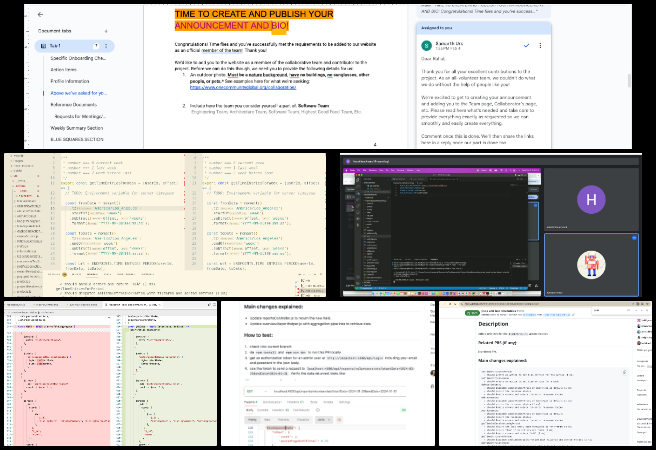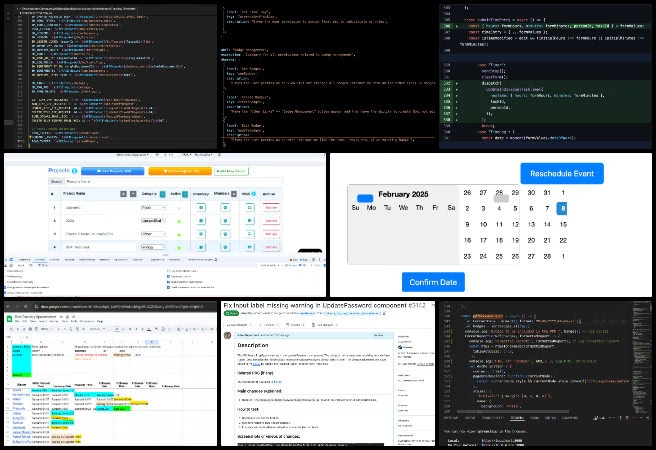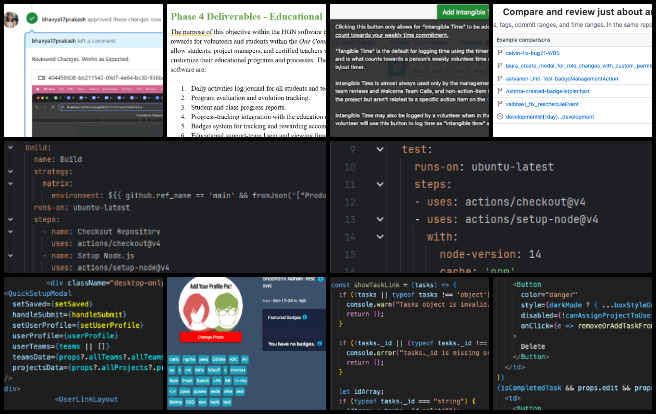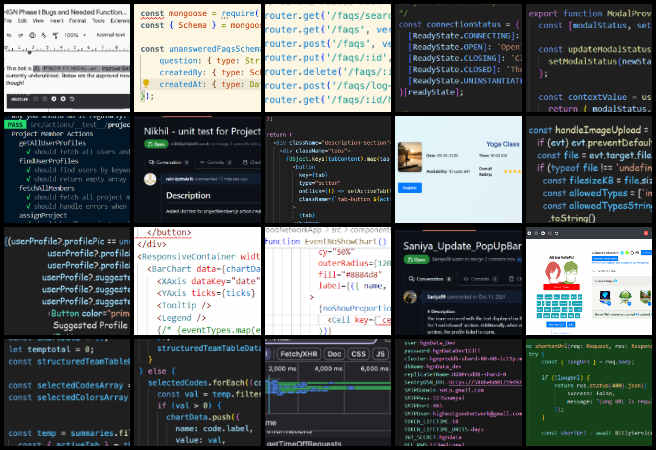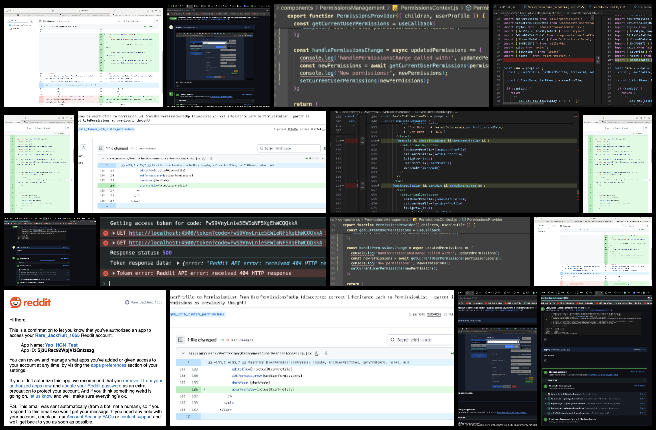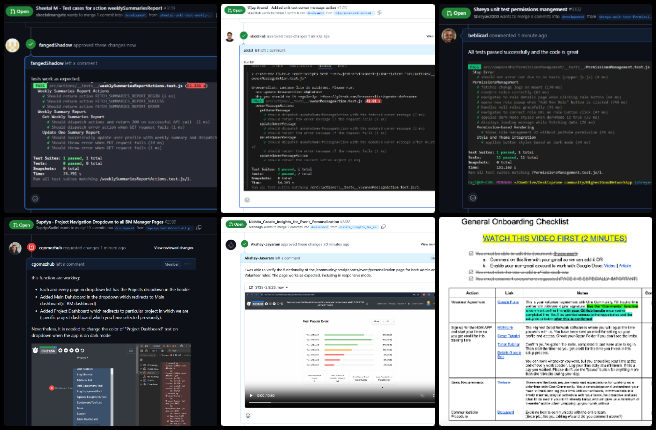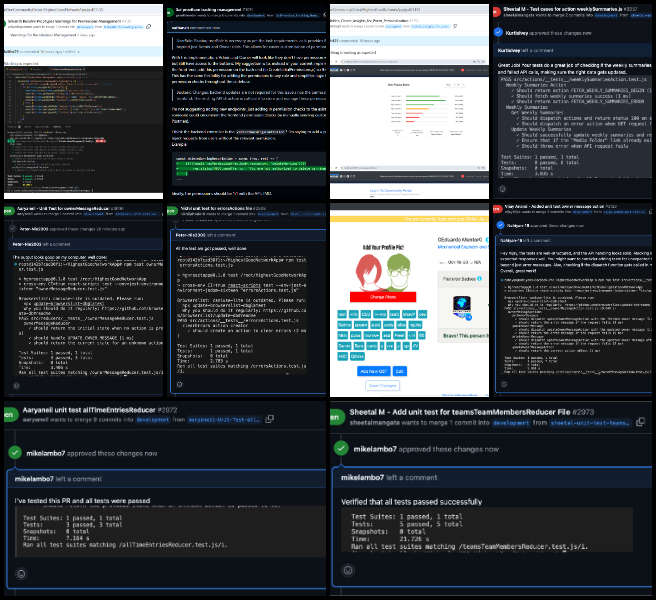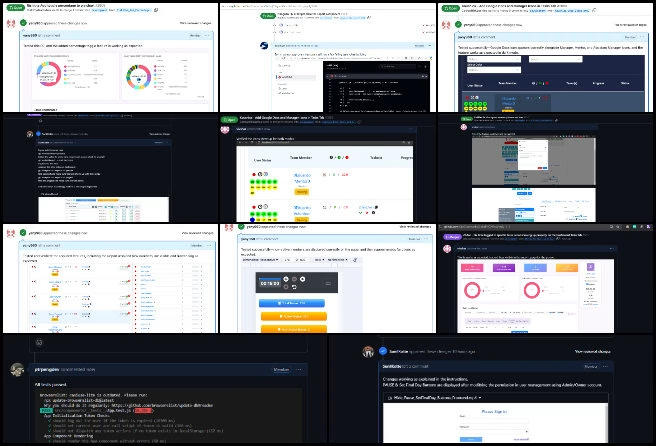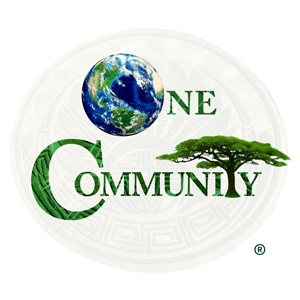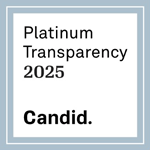Eco-renovating the Human Story – One Community Weekly Progress Update #621
At One Community, we are eco-renovating the human story to regenerate our planet and create a world that works for everyone. Our all-volunteer team is focused on sustainable approaches to food, energy, housing, education, economics, and social architecture. By open sourcing and free sharing the complete process, we aim to build a self-replicating model that inspires a global collaboration of teacher/demonstration hubs, all for “The Highest Good of All.” Together, we are evolving sustainability and fostering global stewardship practices that promote fulfilled living and lasting progress.
- Here’s our project overview
- Here’s our world-change methodology
- Here’s how this becomes self-replicating
- Here’s how we are open source and free-sharing all the do-it-yourself designs
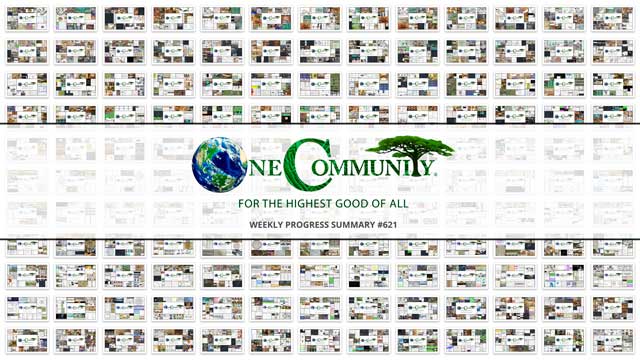
OUR MAIN OPEN SOURCE HUBS
Click on each icon to be taken to the corresponding Highest Good hub page.
One Community’s physical location will forward eco-renovating the human story as the first of many self-replicating teacher/demonstration communities, villages, and cities to be built around the world. This is the February 10th, 2025 edition (#621) of our weekly progress update detailing our team’s development and accomplishments:
Eco-renovating the Human Story
One Community Progress Update #621
DONATE | COLLABORATE | HELP WITH LARGE-SCALE FUNDING
CLICK HERE IF YOU’D LIKE TO RECEIVE AN EMAIL EACH WEEK WHEN WE RELEASE A NEW UPDATE
YOU CAN ALSO JOIN US THROUGH SOCIAL MEDIA
ONE COMMUNITY WEEKLY UPDATE DETAILS
HIGHEST GOOD HOUSING PROGRESS
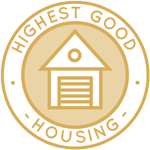 One Community is eco-renovating the human story through Highest Good housing that is artistic and beautiful, more affordable, more space efficient, lasts longer, DIY buildable, and constructed with healthy and sustainable materials:
One Community is eco-renovating the human story through Highest Good housing that is artistic and beautiful, more affordable, more space efficient, lasts longer, DIY buildable, and constructed with healthy and sustainable materials:
- Learn about: Our Upcoming Crowdfunding Campaign
- Learn about the different village models: 7 Sustainable Village Models
- Visit the open source portals for the first two: Earthbag Village OS Hub | Straw Bale Village OS Hub
This week, Adil Zulfiquar (Engineer) continued working on the Vermiculture Toilet engineering designs. The Vermiculture Transportation Solution Report was finalized for publication on the main website, including an introduction summary and adjustments for alignment with the website’s presentation. Edits were made to the Vermiculture Operating Conditions Report based on feedback. The vermicomposting process was clarified to match the system design, and necessary modifications were communicated to the team to improve process efficiency and ensure alignment with project goals. The Earthbag Village, the first of seven planned villages, serves as the initial housing component within One Community’s open source model for eco-renovating the human story. See below for some of the pictures related to work.
Anil Karathra (Mechanical Engineer) continued advancing the engineering and design of the Vermiculture Toilet for the Earthbag Village project. 2D side and front views of the vermiculture toilet structure were completed. CAD models incorporating toilet seat concepts were created to assess size and fit. CAD mock-ups were developed for the final toilet layout, including liquid separators. Participation in the weekly team meeting involved reviewing and assigning team tasks, along with work on concepts for the knockdown mechanism. A weekly summary was compiled, and screenshots of the past week’s work were uploaded to Dropbox. This commitment to eco-renovating the human story drives the development of innovative, eco-friendly solutions that balance environmental responsibility with high standards of functionality. See below for pictures related to this work.
Charles Gooley (Web Designer) continued working on the Open Source DIY Dam Design for Water Retention, Pond and Lake Creation, etc. page. Charles’ updates included rewording, clarifications, and additions to the tables of contents. New content was added to the Dam Risk Analysis and Management section, covering dam risk analysis, assessment, and break risk assessment, with a focus on the USA. Several sections of reworked content were removed. Aircrete is an alternative being explored for the Earthbag Village, a foundational part of One Community’s open-source model for eco-renovating the human story. Take a look at some of the work in the images below.
Faeq Abu Alia (Architectural Engineer) continued his work on the Earthbag Village 4-dome home renders. He refined the interior layout and finishes for the first room, second and third bedrooms, kitchen, jacuzzi area, and living room based on feedback to improve functionality, aesthetics, and coherence. Adjustments were made to align the design with the overall concept, ensuring consistency across spaces. Renderings and interior design elements were reviewed to finalize material choices and visual composition. The Earthbag Village represents a fundamental element of One Community’s open-source approach, dedicated to the mission of eco-renovating the human story. View examples of this work in the pictures provided below.
Karthik Pillai (Mechanical Engineer) continued helping finish the Vermiculture Toilet engineering and helping with the Earthbag Village 4-dome home roof plan. Karthik addressed concerns raised during the weekly team meeting regarding the vermiculture toilet design and worked on potential solutions. He continued the finite element analysis (FEA) for the structure, focusing on creating a T-bracket to hold the slider while preventing gaps. For the four-dome cluster roof project, he compared the use of a truss beam and a steel I-section for the joist and provided the results to Michaela. After receiving a more accurate column layout plan, he designed an updated CAD model for the column layout and prepared to conduct FEA for the new CAD plan. The Earthbag Village is the first of 7 to be built as the housing component of One Community’s open source model for eco-renovating the human story. See the work in the collage below.
Michaela Silva (Architect) continued working on the interior details for the Earthbag Village 4-dome home design. Michaela worked on the living room and dining room spaces, assessing window dimensions to determine the optimal height and width for light while ensuring proper structural support. She also modeled two built-in storage benches, one in the dining room surrounding a circular table and another in the living room beneath the TV and windows. As the first of seven villages in One Community’s open source plan for eco-renovating the human story, the Earthbag Village represents the housing element. See her work in the collage below.
Yi-Ju Lien (Environmental Engineer) continued her work on the Earthbag Village LEED points related to stormwater retention. Yi-Ju reviewed and summarized current issues related to all water systems in the Earthbag Village, including rainwater harvesting, stormwater management, and septic system designs. She identified existing problems and potential improvements for each system. Additionally, she addressed issues that arose during the review and update of the DIY earth dam content on the website to ensure accurate updates, highlighting the importance of maintaining collaboration and unity in eco-renovating the human story. See some of the work done in the collage below.
DUPLICABLE CITY CENTER PROGRESS
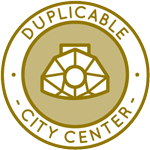 One Community is eco-renovating the human story through a Duplicable and Sustainable City Center that is LEED Platinum certified/Sustainable, can feed 200 people at a time, provide laundry for over 300 people, is beautiful, spacious, and saves resources, money, and space:
One Community is eco-renovating the human story through a Duplicable and Sustainable City Center that is LEED Platinum certified/Sustainable, can feed 200 people at a time, provide laundry for over 300 people, is beautiful, spacious, and saves resources, money, and space:
- Learn about this building and it’s function: Duplicable City Center Open Source Hub
This week, Jason Bao (Architectural Designer) continued working on producing renders for the Duplicable City Center library. He provided further directions and feedback, and a group chat was created for the social dome team to improve communication and file transfers. Minor model issues in SketchUp were addressed, and updates were gathered from group members to assess the current status of the project. Files were requested and received from Maaz, checked, and prepared for merging with the existing model. People and lighting were added to the concert scene, along with new camera angles to improve the composition. Rendering settings were adjusted, and after receiving an updated file, it was merged with the current version. The concert scene was rendered and uploaded to Dropbox for review. Coordination with team members continued to discuss future updates. The Duplicable City Center is a foundational part of One Community’s open-source model, which excels in eco-renovating the human story. This approach is integral to their mission of eco-renovating the human story through innovative and scalable solutions. See some of this work in the pictures below.
Manjiri Patil (Mechanical Design Engineer) continued helping complete the City Center Dome Hub Connector Engineering details. She refined the connector design to improve the creation of precise 2D drawings for accuracy and ease of manufacturing. She finalized and optimized an Excel-based checklist to improve the documentation process. Additionally, she integrated relevant images into the original document to enhance clarity and consistency in the documentation workflow. This approach for eco-renovating the human story supports the development of innovative solutions that are both environmentally friendly and effective. See below for pictures related to this work.
Mohammed Maaz Siddiqui (Architect) continued working on the cupola renders for the Duplicable City Center project. He worked on developing the sun deck area in Lumion, focusing on refining the music concert scene. Additional people were placed throughout the space to create a more dynamic environment, and seating arrangements were adjusted to improve visibility and overall experience for attendees based on their positions in the audience. Within One Community’s open-source framework, the Duplicable City Center plays a central role in the mission of eco-renovating the human story. The images below showcase some of this work.
Nimika Devi (Architect) continued her contributions to the landscape design and development of the Duplicable City Center‘s urban farm. This work was focused on the barn area, including re-rendering the model. Issues arose with texture management, as the textures increased the file size significantly, making the rendering process difficult. The software experienced frequent crashes, preventing smooth execution of renders and requiring multiple attempts. New animals were placed after updating the model, but exporting high-definition renders remained challenging due to the software instability. The Duplicable City Center, within One Community’s open-source framework, is central to their mission of eco-renovating the human story. The images below showcase some of this work.
Rudrani “Sravya” Mukkamala (Mechanical Engineer) continued researching the structural components of a hydraulic elevator, focusing on the framework, guide rails, and load-bearing elements. The assembly of the elevator car was completed, with the design finalized based on the sketches from the previous week. After finishing the elevator car, attention was turned to the design of the spring system, which was developed step by step, focusing on each individual part. Modifications were made to the bottom of the elevator cabin to accommodate the spring system. Adjustments were also made to ensure all components were properly aligned, helping to streamline the design process. For eco-renovating the human story, One Community relies on its open-source model, with the Duplicable City Center playing a pivotal role. The images below showcase some of this work.
Yan Zu (Architectural Designer) continued her work on the greenhouse area of the Duplicable City Center. She modified the materials of the greenhouse interior and exterior flooring, made final adjustments to the greenhouse renderings, and created animations and rendered images for both the interior and exterior. The adjustments refined the visual consistency of the space, and the animations provided a clearer representation of the design and spatial layout. Within One Community’s open-source framework, the Duplicable City Center plays a central role in eco-renovating the human story. The images below showcase some of this work.
HIGHEST GOOD FOOD PROGRESS
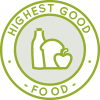 One Community is eco-renovating the human story through Highest Good food that is more diverse, more nutritious, locally grown and sustainable, and part of our open source botanical garden model to support and share bio-diversity:
One Community is eco-renovating the human story through Highest Good food that is more diverse, more nutritious, locally grown and sustainable, and part of our open source botanical garden model to support and share bio-diversity:
- Learn about the structures: Hoop House Hub | Aquapini & Walipini Open Source Hub
- See what we’ll be growing: Gardens & Hoop Houses | Large-scale Structures | Food Forest | TA
This week, the core team continued working on the Master Tools, Equipment, and Materials/Supplies document by adding new tools and refining explanations regarding the direct usage of each item listed. The completed tool lists for the Aquapini and Walipini were also provided. New photographs were included, and a supplementary document was created to improve navigation outside of the over 200-page primary document. One Community’s commitment to eco-renovating the human story is exemplified by its open source plans, a key component of which is the Highest Good Food initiative, showcasing innovative design and implementation. Below are some of the images showcasing this work.
Jay Nair (BIM Designer) continued working on Aquapini and Walipini Planting and Harvesting lighting and HVAC design. He recalculated the lighting energy requirements for the different zones in Walipini 1. Corrections were made to the document to improve clarity and alignment with project standards. Additional adjustments were implemented to account for energy efficiency and the integration of suitable lighting solutions. The Highest Good Food initiative is a key component of One Community’s open source plans, focused on eco-renovating the human story, and exemplifies the organization’s commitment through innovative design and implementation. Below are some of the images showcasing this work.
Jessica Fairbanks (Administrative Assistant) reviewed the training process for several new admin team members and provided detailed feedback for improvement. She also scheduled and completed an interview with a potential new volunteer, leaving her notes for Jae’s review. In addition, Jessica completed her weekly administrative tasks, which included creating a collage and reviewing the work of fellow volunteers. She also made final adjustments to the integration of Highest Good Food into the small-scale organizations page, ensuring the page was clear, concise, and accurate. Focusing on eco-renovating the human story, One Community’s open source plans feature the Highest Good Food initiative as a key component, demonstrating their dedication through innovative design and implementation. Her contributions are highlighted in the collage below.
Junyi Shi (Landscape Architect) continued working on developing a design for Walipini #2 as a part of Aquapini and Walipini Planting and Harvesting project. She made adjustments to the size parameters of tables and chairs in the Lumion model based on feedback to improve their proportions within the space and enhance interaction with users. Additional plants were incorporated to create a fuller planting area. To ensure design accuracy, all renderings were updated. The CAD plan map was refined with material fills and annotation labels, and modifications were made to the introduction page for Walipini 2. The Highest Good Food initiative is essential to One Community’s open source plans, focused on eco-renovating the human story. Her contributions are highlighted in the collage below.
Kishorre Annanth Vijayan (Mechanical Engineer) worked on integrating lighting and climate control solutions for the “Truly Passive Greenhouse” project. The research focused on the “Truly Passive Greenhouse” concept for potential integration with the Aquapini and Walipini designs, emphasizing FEA analysis techniques and HVAC design considerations. Designs and analysis files shared by Vatsal were reviewed, with validation of critical data and research on how soil material properties affect roof performance. A detailed analysis is planned after downloading the licensed ANSYS version. Jay’s work on the lighting system for the Walipini greenhouse was also reviewed, with a focus on energy-efficient LED fixtures designed to meet the light requirements of different plant species. This exploration of passive greenhouse technology is a crucial step in eco-renovating the human story.
The lighting system was integrated into the earthen roof design by calculating light intensity (PPFD), power consumption, fixture spacing for uniform light coverage, and seasonal adjustments. Additionally, airflow requirements were calculated to maintain optimal humidity, prevent diseases, and ensure proper greenhouse ventilation. The Highest Good Food initiative is a key component of One Community’s open source plans, focused on eco-renovating the human story, and exemplifies the organization’s commitment through innovative design and implementation. Below are some of the images showcasing this work.
Mary Nelson (Landscape Planner) worked on the Botanical Garden tutorial, creating graphics to identify the types of collections for the garden using the provided chart templates. She also developed a propagation log template and an accession template that can be applied to any botanical garden. All items were uploaded to the existing botanical garden tutorial. The Highest Good Food initiative is essential to One Community’s open source plans, focused on eco-renovating the human story, and exemplifies the organization’s commitment through innovative design and implementation. Her contributions are highlighted in the collage below.
Silin Wang (Landscape Designer) continued rendering work for Aquapini and Walipini Planting and Harvesting #2: Tropical Moist House. This week she focused on writing the final report. The report includes key design features such as public space elements and interactive designs that promote closer connections with plants. She outlined sustainable agricultural strategies, including an integrated aquaponics system, efficient use of vertical and horizontal space, optimized natural light utilization, heat management, scientific pollination methods, and curved terracing for land management. This detailed work reflects One Community’s broader vision of eco-renovating the human story.
Additionally, the report covers the integration of green infrastructure with community spaces, highlighting functional green areas such as tropical plant displays, edible and medicinal plant zones, educational exhibition spaces, leisure areas, and water management systems featuring efficient irrigation networks, multi-functional growing basins, aquaponics systems, and decorative ponds. Silin also drafted the conclusion, summarizing design concepts, sustainability achievements, and the future role of the greenhouse in ecology, education, and community engagement. One Community’s commitment to eco-renovating the human story is exemplified by its open source plans, with the Highest Good Food initiative playing an essential role in their innovative design and implementation. Her contributions are highlighted in the collage below.
Tanmay Koparde (Industrial Engineer And Team Administrator) calculated Food Procurement storage requirements to optimize space utilization. He refined his food procurement case review for better presentation, searched for AI images related to food procurement, and made updates to enhance procurement processes, improve cost efficiency, and refine supplier evaluations to align with strategic goals. He also reviewed the training of Harshitha, Pallavi, Shilpa, Keerthi, and Prasannadevi and suggested improvements for their respective training blogs. The Highest Good Food initiative plays a key role in One Community’s open source plans for eco-renovating the human story, highlighting the organization’s commitment to innovative design and implementation. See his work in the collage below.
Vatsal Tapiawala (Mechanical Engineer) completed the structural analysis of Walipini 1. He made changes to the report based on the feedback provided. He analyzed the temperature requirements for each space and began running thermal analysis in Revit to assess heating and cooling needs. Additionally, Vatsal studied lighting requirements to compare lighting costs with power costs, examining how different lighting conditions impact overall energy consumption. As a key component of One Community’s open source plans, the Highest Good Food initiative demonstrates their commitment to eco-renovating the human story through innovative design and implementation. See his work in the collage below.
HIGHEST GOOD ENERGY PROGRESS
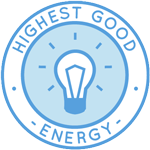 One Community is eco-renovating the human story through Highest Good energy that is more sustainable, resilient, supports self-sufficiency and includes solar, wind, hydro and more:
One Community is eco-renovating the human story through Highest Good energy that is more sustainable, resilient, supports self-sufficiency and includes solar, wind, hydro and more:
- Learn about the open source sustainable-energy foundations: Solar, Hydro, and Wind
- Explore our research into the most sustainable products and companies for saving water and energy: Insulation, Eco-laundry, Lightbulbs and Light Bulb Companies, Doors and Door Companies, Windows and Window Companies, Toilets, Faucets and Faucet Accessories, Urinals, and more.
This week, Muhammad Sarmad Tariq (Electrical Engineer) progressed further in the task he was doing the week before. He wrote the methodology for calculating the profit of a grid-tie versus off-grid solar PV system. The methodology was initially drafted in a Google document and has been refined for use in an Excel sheet. It includes calculations for savings for each system, energy costs for deficient units, investment costs, and battery replacement costs. The Highest Good Energy initiative is a key component of One Community’s open-source plans, focused on eco-renovating the human story, and exemplifies the organization’s commitment through innovative design and implementation. See his work in the collage below.
HIGHEST GOOD EDUCATION PROGRESS
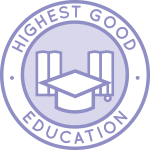 One Community is eco-renovating the human story through Highest Good education that is for all ages, applicable in any environment, adaptable to individual needs, far exceeds traditional education standards, and more fun for both the teachers and the students. This component of One Community is about 95% complete with only the Open Source School Licensing and Ultimate Classroom construction and assembly details remaining to be finished. We’ll report on the final two elements to be finished as we develop them. With over 8 years of work invested in the process, the sections below are all complete until we move onto the property and continue the development and open sourcing process with teachers and students – a development process that is built directly into the structure of the education program and everything else we’re creating too:
One Community is eco-renovating the human story through Highest Good education that is for all ages, applicable in any environment, adaptable to individual needs, far exceeds traditional education standards, and more fun for both the teachers and the students. This component of One Community is about 95% complete with only the Open Source School Licensing and Ultimate Classroom construction and assembly details remaining to be finished. We’ll report on the final two elements to be finished as we develop them. With over 8 years of work invested in the process, the sections below are all complete until we move onto the property and continue the development and open sourcing process with teachers and students – a development process that is built directly into the structure of the education program and everything else we’re creating too:
- Program Overview: Education Open Source Hub
- How the components work together in designing human orchestrated eco-abundance: How to use the Education for Life Program
- Lesson Plans for Life – Lesson Plans How-to
- Foundations of Outstanding Leaders, Teachers, and Communicators
- Curriculum for Life
- Teaching Strategies for Life
- Learning Tools and Toys for Life
- Evaluation and Evolution
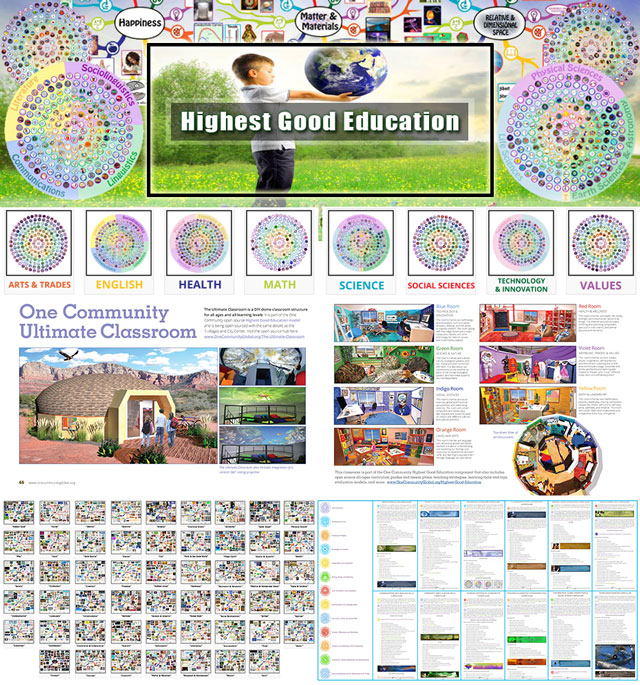
Highest Good Education: All Subjects | All Learning Levels | Any Age – Click image for the open source hub
HIGHEST GOOD SOCIETY PROGRESS
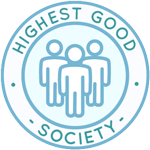 One Community is eco-renovating the human story through a Highest Good society approach to living that is founded on fulfilled living, the study of meeting human needs, Community, and making a difference in the world:
One Community is eco-renovating the human story through a Highest Good society approach to living that is founded on fulfilled living, the study of meeting human needs, Community, and making a difference in the world:
- Read the Highest Good society overview: Highest Good Society
- Learn about the model for fulfilled living and sharing: A Day in the Life
- Learn about the 4 economic models: RBE | For-profit | Non-profit | Entrepreneurship
- Learn about our open source community collaboration and management software: The Highest Good Network
This week, the core team completed over 56 hours managing One Community’s volunteer-work review not included above, emails, social media accounts, web development, new bug identification and bug-fix integration for the Highest Good Network software, and interviewing and getting set up new volunteer team members. They also shot and incorporated the video above that talks about eco-renovating the human story and how eco-renovating the human story are a foundation of the bigger picture of everything One Community is doing. The image below shows some of this work.
Anoushka Hazari (Data Analyst) continued working on code to automate and simplify the Highest Good Network software promotion process. This week, Anoushka reviewed the team’s pull requests and updated the PR review table. She wrote a blog, designed a collage to accompany it, and corrected a previous error to ensure accuracy. Updates were made to the HGN spreadsheet, and the work listed in sheet 4 was reviewed. She recreated visualizations from processed data as detailed bar graphs in Figma for the dashboard, aiming to present insights clearly and cohesively. A pie chart and a bar graph illustrating PR distribution were created, and work on a line graph is ongoing. Anoushka’s contributions to the Highest Good Network directly support One Community’s broader vision of eco-renovating the human story.
To support this, Anoushka reviewed YouTube videos on bar and line graphs to refine the design process. Additionally, she worked on replicating a time series-style line graph for weekly PR reviews per mentor, setting up the frame in Figma and making further refinements. Using Figma enables improved clarity, customization, and alignment with stakeholder feedback to create an intuitive, interactive dashboard for visualizing key trends. This work helps One Community’s mission of eco-renovating the human story and reinforces our commitment to eco-renovating the human story. The following images show her work for the week.
Chitra Siddharthan (Data Analyst And Team Administrator) continued focusing on the existing web pages of the HGN Phase II website. She focused on the weekly summary, Dropbox files, and blog for Team Code Crafters for Blog 620. A Zoom call with Supriya was held to test PR#2989, identifying a few required updates, and the new team member form was also tested. The first draft of the training document, Dropbox, and the blog Harshitha, Shashank, Shilpa, Pallavi, and Keerthi were reviewed. Progress continued on the User Manual for BMD HGN Phase 2. As part of Admin Training, the first draft of the training document, blog, and Dropbox was reviewed, followed by a review of the second draft of her training document. Chitra’s contributions to these diverse tasks reflect her commitment to eco-renovating the human story.
Messages from Nikhil and Honglin regarding their tasks in HGN Phase 2 of the Construction Management Software were addressed. The existing user manual for Phase 2 Construction Management was revised. Assistance was provided to Samman through Slack to clarify his task, followed by a huddle to discuss requirements and progress. Questions related to the User Manual and Samman’s task were recorded and sent to Jae, and after receiving Jae’s input, work continued on the User Manual accordingly. This work, contributing to One Community’s mission of eco-renovating the human story, underscores our deep commitment to eco-renovating the human story. The following images show her work for the week.
Hritvik Mahajan (Data Analyst) continued focusing on multiple tasks related to marketing, promotion, software development, social media strategy, and administrative activities. He posted content on Twitter communities as part of the daily posting strategy and testing engagement strategies in response to recent platform changes. He also contributed to HGN software development by reviewing and testing various front-end pull requests, listing new bugs, and following up with team members regarding changes and merge conflicts. Additionally, he worked on the design for the HGN social media scheduler in Figma. In OC administration, he provided feedback and comments on the work of admin team members for Blog #620, created collages, and reviewed the Binary Brigade team’s contributions. For One Community, this work is integral to eco-renovating the human story, reflecting our unwavering dedication to eco-renovating the human story. The following images show his work for the week.
Raghav Dinesh Pamuru (Product Manager) continued focusing on designing and building a Google Sheets dashboard to simplify tracking and analyzing social media engagement, integrating data from multiple sources. Analysis was performed on existing dashboards developed by different data analysts across various social media platforms to assess their structure, metrics, and effectiveness. The process involved reviewing key performance indicators, identifying gaps, and standardizing data representation to ensure consistency and usability. The new system consolidates insights into a single, streamlined interface, improving accessibility and comparability of engagement data. In support of eco-renovating the human story, this work advances One Community’s mission and strengthens our resolve in eco-renovating the human story. The following images show his work for the week.
Rahul Bavanandan (Data Analyst) continued working on several key projects within the Highest Good Network software, One Community’s Reddit presence, and administration. His engagement on Reddit continued across multiple subreddits to build his online presence. He also developed a Social Media Tracking Google sheet for Reddit to support social media marketing strategy analysis. Progress was made on the HGN Phase 2 Evolution project, specifically translating Figma designs for the Phase 2 dashboard and incorporating feedback. Rahul provided review and feedback to five colleagues to ensure project quality and further One Community Global’s mission. Furthermore, his contributions underscore the organization’s commitment to eco-renovating the human story.
He accessed the blog from the Defining Our Avatar page, confirmed the version number, and optimized the blog using the RankMath Tutorial for advanced SEO integration. Rahul also completed the Weekly Content Administrator – Senior Administration Role, which involved compiling all administrators’ blogs into the main blog, creating a PDF of the complete page, and noting any unjustified areas before moving the content. One Community’s mission of eco-renovating the human story is furthered by this work, demonstrating our steadfast pursuit of eco-renovating the human story. The following images show his work for the week.
Shireen Kayal (Humanitarian Program Developer & Data Manager) continued her work on branding graphics for all of One Community. This week she created new graphics for the Highest Good Housing Page and the For The Highest Good of All®. This week, Shireen made final edits to the “Eco Village Blueprint: Sustainable Communities for the Future,” incorporating team suggestions and modifying sections on “Highest Good Housing” and “Highest Good Economics.” She updated the icons and created eight village infographics, both with and without URLs, while adding URLs to two versions of “The Average Person’s Life Right Now” charts. These visual enhancements contribute to the overarching narrative of eco-renovating the human story.
Additionally, Shireen revised points for all infographics, generated new versions, created an updated infographic for the ultimate classroom, and produced additional copies of each image with aligned URLs, all centered for easy selection based on preferences. This work actively participates in eco-renovating the human story, a core element of One Community’s mission and a testament to our ongoing commitment to eco-renovating the human story. The following images show her work for the week.
Yash Shah (Data Analyst and Team Administrator) continued his admin work and managed the social architecture component of the Highest Good Network software. He assigned a new task to Samman and addressed all related queries. He provided details of the action item to Sharadha and allocated extra hours for Khushi to complete the task. He coordinated with Khushi on action items from an organizer’s perspective and assisted Shilpa in understanding the process of creating blogs as an admin. Yash compiled a list of submitted pull requests, reached out to all developers working on tasks for updates, and instructed them to add PR numbers to the document if completed. He created a blog for Dev Dynasty, organized the weekly folder, made a collage, and provided feedback on fellow volunteers’ blogs. This work helps One Community’s mission of eco-renovating the human story and reinforces our commitment to eco-renovating the human story. The following images show his work for the week.
ADMINISTRATION TEAM
The Administration Team’s summary, covering their work administrating and managing most of One Community’s ongoing process for eco-renovating the human story was managed by Sneka Vetriappan (Data Analyst) and includes Jibin Joby (Data Analyst), Keerthi Reddy Gavinolla (Software Developer), Kishan Sivakumar (Administrative Assistant and Software Team Manager), Olawunmi “Ola” Ijisesan (Administrative and Management Support), Prasannadevi Neelakandan (Software Engineer), Preksha Welankiwar (Digital Marketing Manager), Rachna Malav (Data Analyst), Ratna Meena Shivakumar (Data Analyst and Admin), Saumit Chinchkhandi (Administrative Assistant and Software Engineer), Shrinivas Patil (Software Engineer), Vishnu Murali (Data Analyst), and Zuqi Li (Administrative Assistant and Economic Analyst).
This week, Jibin reviewed his team’s work, created collages, updated assigned pages, and provided feedback for improvements. He also researched analytics terms related to Bluesky and contributed to the creation of a new visualization based on feedback from Jae. Keerthi continued her training by performing administrative tasks such as updating profiles, creating collages, and editing summaries, while learning SEO and WordPress skills. Kishan focused on senior admin duties, reviewed SEO pages, and made final edits. Ola supervised the managers responsible for PR-reviewed teams, tracked progress, and reported on potential promotions. These collective efforts contribute to the broader objective of eco-renovating the human story.
Prasannadevi set up her profile, learned to create and compress collages, and provided feedback on weekly reports. Preksha worked on LinkedIn analytics, interviewed candidates, and reviewed training documents for teammates. Rachna scheduled and interviewed candidates while handling last-minute scheduling conflicts. Ratna worked on social media tasks, including scheduling posts and creating dashboards, and also handled interviews. Saumit managed the pull request workflow, reviewed submissions, and assisted with training. Each team member’s efforts contribute to the overarching vision of eco-renovating the human story.
Shrinivas completed blog tasks, provided feedback, and analyzed time-use data from various sources. Sneka focused on administrative tasks such as managing time logs, providing feedback, and developing tutorials. Vishnu reviewed team members’ work, created visualizations in Tableau, and provided feedback on training documents. Zuqi reviewed weekly summaries for teams, updated LinkedIn metrics, and met with Preksha to discuss LinkedIn Analytics improvements. One Community’s model for eco-renovating the human story includes developing and maintaining a supportive administration team like this. You can see the work for the team in the image below.
GRAPHIC DESIGN TEAM
The Graphic Design Team’s summary was managed by Harshitha Rayapati (Program Manager) and included Aurora Juang (Graphic Designer), Jaime Yao (Creative Technologist), and Junyuan Liu (Graphic Designer, UI/UX Designer), covering their work on graphic designs for eco-renovating the human story. This week, Aurora designed social media posts from Google Sheets, including posting new bios for volunteers. She completed volunteer tasks focused on improving team processes and resource quality for new volunteers, which involved revising errors, ensuring accurate updates, and creating new bio announcements. By referencing past tutorials, she verified correct increments and sizing for each profile while providing progress updates to Jae. Additionally, she addressed discrepancies in tutorial videos flagged by Sara, making necessary corrections and updating previous versions to align with current standards. Aurora’s contributions this week exemplify the collaborative spirit essential for eco-renovating the human story.
Jaime completed volunteer announcement pages for Snehal, Sharadha, Humera, and Sarmarth and worked on social media visuals for the theme “By making conscious choices, we can protect our planet for future generations.” This included developing concepts such as “Carbon Shadow” with “The Two Shadows,” “Choice in Motion,” “Steps Toward Change,” and “Turning the Page” with “Writing a New Future,” focusing on illustrating the impact of individual decisions on the environment and the importance of sustainability. Jaime’s work contributes to the broader narrative of eco-renovating the human story. Junyuan created social media content by collecting images and exploring design options, completing three new social media images through an iterative process and initiating searches for future design ideas. Additionally, Junyuan brainstormed approaches for upcoming images, created bios for three volunteers, designed images for their bios, and edited their information on a web page. See the Highest Good Society pages for more on how this contributes to eco-renovating the human story. See the collage below to view some of their work.
HIGHEST GOOD NETWORK PROGRESS
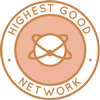 One Community is eco-renovating the human story through open source Highest Good Network® software that is a web-based application for collaboration, time tracking, and objective data collection. The purpose of the Highest Good Network is to provide software for internal operations and external cooperation. It is being designed for global use in support of the different countries and communities replicating the One Community sustainable village models and related components.
One Community is eco-renovating the human story through open source Highest Good Network® software that is a web-based application for collaboration, time tracking, and objective data collection. The purpose of the Highest Good Network is to provide software for internal operations and external cooperation. It is being designed for global use in support of the different countries and communities replicating the One Community sustainable village models and related components.
- Learn about our open source community collaboration and management software: The Highest Good Network
This week, the core team continued their work on the Highest Good Network PRs testing, confirming the fixed PRs for multiple issues, including cropping of the “Team Member Tasks” section on the Tasks tab, incorrect sizing of the edit link window, and a blank screen appearing after clicking the edit button in badge development. Other confirmed fixes included improvements to the search functionality for filtering emails (#3008), added sorting functionality to the equipment table (#2743), redirection changes on the equipment add page (#2753), a fix for purchase requests (#2764), modifications to the hover text for the Add QST button (#3013), and the ability to delete one’s own time (#2566). Additionally, they assigned tasks to eight volunteers and provided feedback on food graphic images. See the Highest Good Society and Highest Good Network pages for more on how this relates to eco-renovating the human story. The collage below shows some of their work.
ALPHA SOFTWARE DEVELOPMENT TEAM
The Alpha Team’s summary, covering their work on the Highest Good Network software, was managed by Harshitha Rayapati (Program Manager) and Lin Khant Htel (Frontend Software Developer) and the team includes Eve Ye (Volunteer Software Engineer Intern), Sheetal Mangate (Software Engineer), Sujith Reddy Sudini (Full-Stack Software Developer), Rupa Rajesh Bhatia (Software Engineer), and Vinay Vallabineni (Software Engineer), covering their work on graphic designs for ecological models for thriving. This week, Lin reviewed and approved PR #3119, tested the codebase locally with all test cases passing, and continued learning about the project. Lin also reviewed and checked the weekly summaries, photos, and videos submitted by Alpha team members and managed Alpha Team tasks and oversight. Developing eco-renovating the human story requires careful attention to individual contributions and collaborative dynamics.
Eve worked on applying for Pinterest API access, resolving an issue related to a required privacy policy link by providing a temporary solution. She also researched essential features and tools for development to ensure compliance with Pinterest’s developer policies. This proactive approach to platform integration reflects a commitment to eco-renovating the human story. Sheetal began working on “Development for Re-Engagement Strategies” from HGN Phase III, reviewing the Project Intent document and existing email-related code before starting development. She also reviewed CSS for front-end alignment and fixed a local backend issue to ensure a smooth development environment. Sujith worked on implementing the resource management dashboard for the Highest Good Network App, completing development tasks, fixing reported issues, ensuring code adhered to linting standards, and raising PR #3128 after testing. These developments and improvements will help in eco-renovating the human story.
Rupa improved the multi-step form project by updating the design for better responsiveness, using reusable components, and customizing various UI elements. She added interactive features such as sliders, custom input fields, and toggle switches, managed with modular state handlers. She implemented asynchronous routing for smoother transitions while retaining user inputs, introduced smart logic for dynamic form responses, and added real-time data validation. She also developed custom features for digital signatures and user preferences. As part of managerial training, she collaborated with Sheetal, Vinay, and Sujith to analyze summaries and workflows and reviewed Lin Khant Htel’s project for further learning. This holistic approach to development contributes to the larger goal of eco-renovating the human story. Vinay addressed two bugs, updating the cron job schedule to prevent deactivated users from automatically reactivating on their reactivation date and resolving an issue where tasks created by pasting a resolved task were not displayed by excluding the “completedTask” property. Learn more about how the Highest Good Network will measure and assist in eco-renovating the human story in the Highest Good Network open-source hub. The collage below shows a compilation of the work from this team.
BINARY BRIGADE SOFTWARE DEVELOPMENT TEAM
The Binary Brigade Team’s summary overseeing advancements in the Highest Good Network software was managed by Vijay Anand Pandian (Full Stack Software Engineer) and Anirudh Sampath Kumar (Software Developer) and includes Aaryaneil Nimbalkar (Software Developer), Deepthi Kannan (Software Engineer), Geeta Matkar (Software Engineer), Sabitha Nazareth (Software Engineer), Samman Baidya (Software Engineer), and Sriram Seelamneni (Software Engineer). The Highest Good Network software is how we’ll be managing and objectively measuring our progress for eco-renovating the human story through our social architecture, construction, production, and maintenance processes.
This week, Aaryaneil worked on test cases for the badgeManagement component, ensuring proper handling of badge assignments, including scenarios where no badges were selected or a user was not found. Additional tests were added to verify badge collection updates, badge count increments, and error handling for missing badge names. Backend modifications were made to support API functionality with permissions. Aaryaneil also collaborated with Sabitha to integrate the front end with the back end for task management and implemented the Dropbox link integration into the profile page. These enhancements to the platform’s functionality contribute to the larger goal of eco-renovating the human story.
Anirudh worked on resolving a bug related to a one-day difference in end dates between the User Management page and the Reports page. This issue caused discrepancies in end dates, particularly for accounts like Aaron-Xuyao Wang. After identifying that the mismatch was due to the Reports page using UTC while the User Management page used LA time, he made adjustments to align the date formatting. The updated code is currently being tested to verify its effectiveness and check for any unintended impacts. This attention to detail in the software development process reflects One Community’s broader commitment to eco-renovating the human story. Deepthi fixed the numbering alignment issue in the “i” icon content on the Projects page. She worked with the team members to look into the weekly summary bug, confirming that it was merged into the development branch but not deployed in the live branch, and continued troubleshooting to identify the cause. She also addressed the requested review changes for the leaderboard header bug by making the necessary updates. These enhancements contribute to the overarching objective of eco-renovating the human story.
Geeta worked on fixing header height issues for text and images in PR 2987 and addressed the visibility of the Generate Summary button in PR 3097. She investigated an issue where the summary was not copying as expected and worked on implementing an autofill date feature for a dialogue box. These improvements to user interface elements contribute to the overall efficiency of the Highest Good Network, a key tool for eco-renovating the human story. Sabitha gained backend access and discussed API integration with Aaryaneil for front-end connectivity. An issue was identified where the GitHub username and Dropbox folder path details were unavailable for a user, requiring a solution to transmit that information. Steps are being considered to address this gap in the integration process. This collaborative effort contributes to the broader goal of eco-renovating the human story.
Samman worked on completing his assigned task and encountered issues with the login functionality and the BM Dashboard not loading, but he resolved them. After discussing the task with Chitra and clarifying details with Jae, he made final changes, tested the code, and is now waiting to push a pull request. These contributions, focused on enhancing the functionality and reliability of the Highest Good Network software, directly support the broader initiative of eco-renovating the human story. Sriram worked on fixing an issue with default permissions not being saved on the permissions management page and added a new field in the userProfile permissions object to track modified default permissions. He enabled Owners to manage all permissions, including default ones and addressed feedback from multiple pull requests. He also modified the logic for three filter toggles to support multi-color toggles. These enhancements to the permission system contribute to the broader goal of eco-renovating the human story by facilitating collaborative and transparent project management.
Vijay focused on enhancing the HGN software project by implementing unit tests for various action creators. He completed the unit test implementation for the “ownerMessageActionCreator” file and began working on unit tests for the “allUsersTimeEntriesActionCreator” file. Throughout the week, he dedicated time to ensuring the accuracy and reliability of these components to improve overall code quality. See the Highest Good Society and Highest Good Network pages for more on how this relates to eco-renovating the human story. View some of the team’s work in the collage below.
BLUE STEEL SOFTWARE DEVELOPMENT TEAM
The Blue Steel Team’s summary, presenting their work on the Highest Good Network software was managed by Nazanin Hashemian (Software Developer, Team Manager) and includes Manasa Viswanadhapalli (Software Engineer), Ramakrishna Aruva (Software Engineer), Sai Girish Pabbathi (Software Engineer), Sharan Sai Marpadaga (Software Developer), and Supriya Sudini (MERN Stack Developer). The Highest Good Network software is how we’ll be managing and objectively measuring our process for eco-renovating the human story through our social architecture, construction, production, and maintenance processes. This week, Manasa created a new pull request and reviewed the document for reference. She investigated an issue with pushing changes to the remote repository that occurred due to an access denied error.
Manasa then made a request for account access and reviewed the bug document. Nazanin updated Task tracking by modifying the markAsDone function in TaskButton.jsx to include a resolvedBy field, allowing the system to record the user who completed a task. The handling of the “In Progress” status was reviewed, as tasks not marked as “Complete” were defaulting to this status. Updates were made to TeamMemberTask.jsx to display task statuses as either “In Progress” or “Complete.” Ramakrishna explored different approaches to resolve a backend issue. He investigated multiple versions of the library causing the issue and experimented with various methods. This ongoing refinement of the system directly contributes to the broader initiative of eco-renovating the human story.
Sai focused on fixing the toolbar issue for the time logging modals. The debugging process helped identify the source of the issue, and an attempt to resolve it by overwriting previous commit changes was unsuccessful. Various methods were tested to find a solution, and the TinyMCE documentation was reviewed to check for any recent changes affecting functionality. These efforts to refine the time logging modals contribute to the broader project of eco-renovating the human story by improving the usability and efficiency of the Highest Good Network, a crucial tool for tracking progress and collaboration. Sharan Sai continued investigating the issue of blue squares not being automatically assigned in the development environment, even though the conditions were met. The problem was traced to user profile API data, which is not updating or returning the expected values. Debugging efforts centered on the React application, using Chrome DevTools and VS Code breakpoints to track data processing and locate discrepancies. He reviewed API responses, state management, and potential frontend issues that could be affecting the assignment of blue squares. This ongoing pursuit of functional code contributes to the larger goal of eco-renovating the human story.
Supriya worked on enhancing user interface elements within a project by utilizing the Ant Design (antd) library to incorporate Font Awesome icons into placeholders. This integration was achieved through the use of the prefix property in Input components to visually indicate the type of data expected in form fields, such as usernames and passwords. Additionally, Supriya reviewed PR 2751 to ensure consistency and functionality aligned with project standards, verifying changes and ensuring that the implementation met the required specifications without introducing errors. See the Highest Good Society and the Highest Good Network pages to learn more on how their work contributes to eco-renovating the human story. The collage below shows a compilation of the work from this team.
CODE CRAFTERS SOFTWARE DEVELOPMENT TEAM
The Code Crafters Team, covering their work on the Highest Good Network software, was managed by Swaroop Udgaonkar (Software Engineer) and includes Anjali Maddila (Software Engineer), Ashrita Cherlapally (Software Engineer), Denish Kalariya (Software Engineer), Dhrumil Dhimantkumar Shah (Software Engineer), Humera Naaz (MERN developer), Muhideen Mustapha (Software Engineer), Pavan Swaroop Lebakula (Software Engineer), Pratyush Prasanna Sahu (Software Engineer), and Summit Kaushal (Backend Software Developer). The Highest Good Network software is how we’ll manage and objectively measure our process for eco-renovating the human story through our social architecture, construction, production, and maintenance processes.
This week, Anjali worked on fixing the material list on the dashboard. Initially, all columns displayed a value of zero. Changes were made to the files materialsActions.js and bmMaterialsController.js to update stock availability. After implementing the modifications, the columns reflected the correct stock values, and availability was dynamically updated based on stock destroyed and stock used. Anjali’s contribution to the dashboard’s material list functionality directly supports One Community’s broader vision of eco-renovating the human story by ensuring accurate resource management within their sustainable model. Ashrita worked on debugging the code and performed final checks to complete the assigned task. A new pull request was created for the frontend portion and submitted for review. The frontend implementation allows badge selection to display statistics of assigned users in a pie chart and lists up to ten users assigned to each badge in the UI. The functionality was verified to work in both light and dark modes. This contribution enhances the user interface, improving accessibility and data visualization for badge management, a key component in eco-renovating the human story.
Dhrumil worked on the 246 Phase 2: Reusables: Single Update, which is nearing completion. While working on this task, he encountered challenges due to limited experience with Node.js, requiring him to learn the technology while progressing with the work. Additionally, during the task, he identified an issue on the backend that needed attention, leading him to address both frontend and backend aspects. With this task nearly complete, he is ready for a new assignment. With this task nearly complete, he is ready for a new assignment, contributing to the broader goal of eco-renovating the human story. Summit worked on adding additional checks and logic to handle edge cases, debugging code to address a potential fix, and exploring ways to integrate the code into the current implementation. Efforts included making changes to the database and attempting to use an aggregation pipeline to resolve the issue. He also researched to identify effective solutions. This exploration of technical solutions plays a vital role in eco-renovating the human story.
Denish worked on the Highest Good Education Portal Access as part of Phase 4 of the project. The work involved implementing user authentication and authorization mechanisms similar to those in Phase 2. Role-based access control was configured to ensure appropriate user privileges. System tests were performed to identify and resolve access-related issues, improving portal stability. Collaboration with the team focused on documenting updates and integrating lessons learned from previous phases. The tasks aimed to enhance user accessibility and security while maintaining alignment with project objectives. The tasks aimed to enhance user accessibility and security while maintaining alignment with project objectives, ultimately contributing to eco-renovating the human story.
Humera worked on scheduling future meetings. She implemented the calendar invite functionality in meetingController, added routes, and made changes in Header for frontend integration. She encountered an issue with userProfile being inaccessible, so she used unreadMeeting to retrieve meeting details instead. She was able to generate notifications with calendar invites but faced an issue where the notification sound played after the message was read rather than when it was first displayed. Additionally, she worked on retrieving scheduled meeting messages but could only fetch messages for expected meetings within a certain number of days rather than after a specified number of days. These efforts contribute to the smooth operation of team communication and project coordination, which are essential for eco-renovating the human story.
Swaroop worked on completing the alignment of teams and people reports for smaller screens, ensuring there were no misalignment issues. He made adjustments to the reports and modified JSX files as part of the updates. As a manager-in-training, he reviewed his team members’ work, including photos, videos, and summaries. This commitment to iterative improvement across all aspects of the project contributes to the larger goal of eco-renovating the human story. Muhideen completed the task of displaying badges assigned to all users and updated the cron job to automatically populate the list of users for each badge. A pull request was submitted for the backend portion of the task, which is now available for review. The update includes changes to the badge management system’s user association functionality, ensuring proper synchronization between badge assignments and user data through a two-step update process. These improvements are all part of One Community’s ongoing work in eco-renovating the human story.
Pavan closed previous tickets, wrote observation documents, and started working on fixing the member column filter. He reviewed previous pull requests related to this issue and attempted to reproduce a memory issue but was unable to do so. He continued investigating the memory issue by reviewing code changes to identify potential leads. This ongoing development plays a crucial role in eco-renovating the human story.
Pratyush worked on the Logging Virtual vs. In-Person Attendance task. He added an event list at the bottom of the page, displaying all events connected to the selected month, with three events currently included. Additional details were incorporated into the event list, accessible through a drop-down option. While working on the implementation, he encountered an issue where the webpage did not function as expected and investigated possible fixes from external sources. The issue was identified as a problem with the div structure and defined tags, which was resolved, and the page is now running as intended. See the Highest Good Society and Highest Good Network pages for more on how this relates to eco-renovating the human story. View some of the team’s work in the collage below.
DEV DYNASTY SOFTWARE DEVELOPMENT TEAM
The Dev Dynasty Team’s summary, covering their work on the Highest Good Network software, was managed by Jatin Agrawal (Software Engineer) and includes Honglin Chen (Software Engineer), Ghouse Shahe Meera Ziddi Mohammad (Software Engineer Intern), Mrinalini Raghavendran (Software Engineer), Nikita Kolla (Full Stack Developer), Nishita Gudiniye (Software Engineer), Shreya Vithala (Software Engineer), Shraddha Shahari (Software Engineer), and Zhifan Jia (Software Engineer). The Highest Good Network software is how we’ll manage and objectively measure our process for eco-renovating the human story through our social architecture, construction, production, and maintenance processes.
This week, Honglin raised PR 3107 and implemented new features for the lesson list, including a dropdown to filter lessons by time range—year, month, or week—and options to sort by creation date, lesson date, or number of likes. He also ensured that only post authors can see edit or delete links and that backend updates reflect correctly. These enhancements to the lesson list functionality contribute to a more organized and user-friendly educational experience, a key component in eco-renovating the human story. Jatin worked on resolving issues related to “Disallow negative time logged,” “Fix lead team badge auto-assignment,” and “Fix task editing crashing webpage.” He added `Math.abs()` to `EditTaskModal.js` and a condition in `taskController.js` to prevent negative time values and removed the `myTeam` model due to MongoDB memory issues, generating data at runtime and creating relevant pull requests. These improvements contribute to the ongoing process of eco-renovating the human story.
Ziddi fixed a critical bug that allowed admins and owners to view other users’ dashboards and add summaries on their behalf. The bug caused the leaderboard and task tab to show inconsistent data, with admin data appearing under the user’s name. This improvement is a tangible step toward eco-renovating the human story. Ziddi’s fix ensures the task tab and leaderboard now display the correct data for each user, and the summary saves properly. Mrinalini worked on refining project requirements and addressing feedback on her pull requests. She created a new frontend component for the HighestGoodApp, submitted pull requests, and updated the create listing frontend for approval. Additionally, she collaborated with a team member to define requirements for the Highest Good Education phase and began drafting a design document based on deliverables and feedback.
Nishita collaborated with Pallavi to integrate the front-end for the activity description and summary section with Pallavi’s event description page, creating a PR for both tasks. She also developed the front-end UI for event stats and implemented filter functionality for event personalization insights using dummy data as placeholders while awaiting backend implementation. This forward-thinking approach to user interface design contributes to the broader initiative of eco-renovating the human story. Nikita added a bar chart feature to the HGN portal to display project tasks and their hour contributions. The chart includes options to view total hours contributed versus remaining, total hours contributed only, or total hours remaining only, with default sorting by date and options to reorder by hours. To enhance load speed, the chart is hidden by default. This enhancement provides a clear visual representation of project progress, aiding in resource allocation and overall project management, all in service of eco-renovating the human story.
Shraddha worked on fixing the incorrect assignment of new badges, identifying multiple errors and ongoing investigation into the root cause. She also debugged the “Send Emails” tab, confirming that errors occur only when request headers and content are incomplete. Additionally, she fixed an issue related to saving featured badges, tracing the problem to a null variable caused by improper initialization. These targeted improvements to the platform’s functionality demonstrate a commitment to eco-renovating the human story. Shreya developed and implemented unit tests for `ProjectInfoModal.jsx` and refined the pull request for `AskTaskModal`, focusing on resolving merge conflicts and fixing bugs to improve feature integration. Eco-renovating the human story is a key objective driving these software enhancements.
Zhifan finished testing and resolving the issue where time logged for specific tasks was not showing on the Dashboard Tasks tab and created a pull request. He revisited the “Badge Data Not Displayed on Summary Page” issue, identifying a problem in the frontend filtration process that caused badges to return as undefined due to their showReport property being null or false. Zhifan confirmed that all badges should be displayed regardless of this property and spent the rest of the week designing the database structure for event tracking. See the Highest Good Society and Highest Good Network pages for more on how this relates to eco-renovating the human story. View some of the team’s work in the collage below.
EXPRESSERS SOFTWARE DEVELOPMENT TEAM
The Expressers Team’s summary, covering their work on the Highest Good Network software, was managed by Strallia Chao (Software Engineer) includes Jinda Zhang (Software Engineer/Machine Learning Engineer), Rahul Trivedi (Software Engineer), and Shreya Laheri (Software Developer). This week, Jinda enhanced the test coverage by implementing unit tests for various time entry action creators. The tests validated that the correct actions were dispatched for functions like setTimeEntriesForPeriod, setTimeEntriesForWeek, deleteTimeEntry, editTimeEntry, postTimeEntry, getTimeEndDateEntriesByPeriod, getTimeEntriesForPeriod, and getTimeEntriesForWeek. These tests ensured that appropriate endpoints were called, data was correctly fetched and dispatched, and error handling was managed, particularly for 401 unauthorized errors. This proactive approach to quality assurance contributes to the larger goal of eco-renovating the human story.
Rahul rejoined One Community after a break and completed the orientation and setup of the latest versions of the application. He updated the code and set up the backend HGNRest repository on his local system, creating the .env file to connect to the database and other required services. He followed the setup instructions in Google Docs, updated the code, and set up the frontend HighestGoodNetworkApp repository, ensuring proper connections with the database and services. These contributions directly support One Community’s broader vision of eco-renovating the human story. Rahul also created his bio and uploaded his picture for the social media announcement, including details about his projects, experience, and contributions. He reviewed documents and guidelines related to PR reviews and bug tracking and assisted a new Software Engineer Volunteer in setting up the HGN App on her local machine.
Shreya continued working on copying and consolidating questions from the HGN Questionnaire spreadsheet while researching better ways to display them on the dashboard. She attended the weekly team meeting to discuss progress, tasks, and project updates. Furthermore, her contributions to streamlining data visualization within the HGN system directly support the broader objective of eco-renovating the human story. Additionally, she completed her work on the Admin Attendance page for Phase 3 and submitted Pull Request #3140 for review. Strallia updated and finalized the backend logic for the Blue Square Stats chart and created PR 1214 to submit those changes. She addressed backend issues and feedback from Tatyana, including updates to the backend code for the Total Org Summary page. She also worked on resolving additional backend issues and ensuring that retrieved data matched the data on other pages of the app. See the Highest Good Society and Highest Good Network pages for more on how this relates to eco-renovating the human story. See the collage below to view the team’s work.
LUCKY STAR DEVELOPMENT TEAM
The Lucky Star Team’s summary of the Highest Good Network software, was managed by Anne Zhang (Software Engineer) and includes contributions from Chetan Sunku (Software Engineer), Koushica Bosadi Ulaganathan (Software Engineer), Nikhitha Kalinga (Software Engineer), Srikanth Pusthem (Full Stack Developer), T R Samarth Urs (Data Analyst), Shefali Mittal (Volunteer Software Engineer), and Vaibhavi Madhav Deshpande (Software Engineer). This week, Chetan worked on resolving an issue where the “Export All Badges to PDF” feature did not include newly created and assigned badges in the User Profile section under “Select Featured.” Koushica focused on implementing Dark Mode across the website, addressing compatibility issues with React-based editor components by configuring a specific prop to ensure proper display. These contributions to the website’s functionality and user experience are essential steps in eco-renovating the human story. She also updated individual tasks to reflect time entries in real time using the Redux state library. Nikhitha worked on implementing the Set Final Day user permission within the permission management functionality, ensuring proper integration while addressing conflicts. This work contributes to the broader goal of eco-renovating the human story.
Shefali made updates to the auto-poster on Twitter/X, fixing an issue where posts were not being saved properly and developing a front-end page to display all posts, even when the count is high. Srikanth contributed to multiple pull requests, resolving console errors, fixing a missing label prop in UpdatePassword.jsx, and implementing unit tests for token-related behaviors in the App component. These contributions, focused on enhancing functionality and resolving technical issues, support the overarching goal of eco-renovating the human story. He also ensured PRs adhered to project guidelines with clear documentation and structured code. Samarth led a six-member PR review team, tracking their evaluations, verifying images, providing feedback, consolidating contributions into a blog post, and updating the PR review tracking sheet. He also reviewed the weekly blog and followed up on team member bios. This multifaceted approach to quality assurance and team coordination contributes significantly to eco-renovating the human story.
Vaibhavi worked on the Frontend Event Reschedule feature, developing a reschedule button and a date picker modal in RescheduleEvent.jsx while resolving version compatibility, permission, and repository access issues. Anne focused on testing and fixing a dropdown menu issue in manager accounts under Other Links, verifying that a recent commit resolved the problem. She also investigated a compilation issue with BMHeader.jsx and managed the Lucky Star team’s reviews and pictures of the week. See the Highest Good Society and Highest Good Network pages for more on how this relates to eco-renovating the human story. See the collage below to view the team’s work.
MOONFALL SOFTWARE DEVELOPMENT TEAM
The Moonfall Team’s summary, covering their work on the Highest Good Network software was managed by Newell Newell (Manager), and includes Bhavya Prakash (Software Engineer), Calvin Liu (PR Team), Shashank Kumar (Software Engineer), Swathi Dharma Sankaran (Software Engineer), and Yili Sun (Software Engineer). This week, Bhavya collaborated with Mrinali and Jae to discuss next steps and shared research from the previous week. A task assigned by Suneetha was completed and involved a pull request review and troubleshooting issues while reproducing the fix. A Figma page was created for Education Good Designs and coordination continued with Jae on upcoming tasks. Bhavya’s contributions this week demonstrate a commitment to the ongoing process of eco-renovating the human story.
Calvin resolved multiple issues in Timelog.jsx and its associated CSS. He included fixing a broken hyperlink and adjusted tooltip alignment. He addressed inconsistent modal behavior. A tooltip misalignment issue was resolved by implementing display adjustments, and a modal closure issue was fixed by modifying event handling. Calvin submitted PR 3134 and addressed ESLint. Prettier formatting errors detected in the GitHub Actions workflow and reverted unintended changes while maintaining project standards. These contributions to the project demonstrate a commitment to eco-renovating the human story. Newell migrated CircleCI to GitHub Actions and wrote OpenAPI documentation specifications. He fixed website issues and proposed a migration to Nest.js. He developed backend code for a virtual list and completed some WordPress post migrations. These improvements to the website’s infrastructure and backend systems contribute to the overall goal of eco-renovating the human story.
Shashank focused on resolving a spacing issue in the codebase and required extensive review due to its complexity. A pull request was prepared and continued to investigate a bug affecting the weekly summary feature though the root cause remains unclear. This ongoing effort contributes to the larger project of eco-renovating the human story. Swathi developed and executed unit tests for the Task.jsx component using Jest and React Testing Library. She validated rendering, event handling, modal visibility, and priority icon behavior. Issues with Jest module resolution, Enzyme dependencies, and configuration files were resolved by removing Enzyme. She updated Jest configuration and modified the setup file. Additional test cases were implemented for task expansion, deletion, dark mode UI and assigned resource rendering. These testing enhancements contribute to the overall reliability and quality of the software, a crucial aspect of eco-renovating the human story.
Yili worked on making tasks in the User Management component clickable hyperlinks and created a pull request for it. The update ensured that project links correctly redirect to the Work Breakdown Structure and that task titles function as clickable links. She improved navigation across the platform. She tested links function correctly and maintain consistency. See the Highest Good Society and Highest Good Network pages for more on how this relates to eco-renovating the human story. Below is a collage for the team’s work.
REACTONAUTS SOFTWARE DEVELOPMENT TEAM
Reactonauts’ Team’s summary, covering their work on the Highest Good Network software was managed by Vijeth Venkatesha (Software Engineer) and includes Gmon Kuzhiyanikkal (Software Engineer), Haoyue Wen (Software Engineer), Jinxiong You (Software Engineer), Khushi Jain ( PR Team IN), Nikhil Pittala (Software Engineer), Pallavi Thorat (PR Team O-Sh), Peterson Rodrigues (Full-Stack MERN Stack Developer), Rishitha Mamidala (Software Engineer), Saniya Farheen (Software Engineer), Sharadha Shivakumar (Software Engineer), and Xiyan Li.
This week, Gmon worked on ensuring that team tasks are hidden when the team toggle is used and added bell notifications for task deadlines for completion. A previously existing PR was identified as complete. He finished on adding active/inactive team member counts on the team page and led to the creation of a new pull request PR 2850. Gmon’s contributions to team management and task tracking are vital for eco-renovating the human story within the collaborative development environment. Relevant screenshots and videos for PR 2850 were organized and uploaded to Dropbox. Haoyue worked on resolving merge conflicts and addressed requested changes. She debugged errors in the Quick Setup Tool to ensure proper functionality. She continued on implementing the FAQ tool based on updated specifications. Jinxiong focused on resolving bugs in the HGN Apps and fixed a pop-up window issue caused by the reset time button. She tested all functions and submitted a pull request. Additional application issues were identified and addressed. These contributions directly support the ongoing development of tools crucial for eco-renovating the human story.
Khushi refined the HGN Phase III: Social Architecture document, aligning content with Figma designs, resolving inconsistencies, and troubleshooting npm test failures for the Feedback Form UI. She also reviewed PRs related to event personalization insights and volunteer resource requests. Nikhil completed unit testing for projectMembers.js and began testing userManagement.js. He reviewed test coverage and formed test cases to ensure validation of key functionalities. He identified edge cases and refined for better reliability. This rigorous approach to testing ensures the robustness of the system, a critical component in eco-renovating the human story. Pallavi collaborated on the registration page’s description section and integrated the DescriptionSection.jsx component to display descriptions, participants, comments, and FAQs. She applied React best practices by replacing array indices as keys and resolved linting issues. Her contributions to the registration page enhance the user experience and contribute to the overarching goal of eco-renovating the human story. She submitted a pull request to improve functionality. Peterson worked on fixing a Dashboard page bug where clicking the Save button caused an error message instead of sending the summary correctly.
Rishitha developed front-end visualizations for No-Show Rate Reports using mock data and designed demographic breakdown charts. She compared visuals to analyze trends across event types and locations. Saniya reviewed pull request feedback for a bug fix and continued working on Task 14 to ensure deactivated individuals last week is visible in the Weekly Summary Report. She initiated a new task in HGN Phase 2 to implement a job posting filter using the filter popup function. These contributions, focused on data visualization and improved reporting, enhance the platform’s ability to track key metrics related to community engagement, a vital aspect of eco-renovating the human story.
Vijeth Venkatesha focused on team management and technical investigations and verified the weekly summary process. He reviewed updates and analyzed MongoDB for redundant data contributing to application slowdown. Xiyan integrated a new URL shortening service into the Highest Good Network application and developed components for API interactions and request processing. The feature includes URL shortening, a history tracker, and a copy-to-clipboard function, leveraging TypeScript for type safety and implemented error handling. See the Highest Good Society and Highest Good Network pages for more on how this relates to eco-renovating the human story. Below is a collage for the team’s work.
SKYE SOFTWARE DEVELOPMENT TEAM
Skye Team’s summary, covering their work on the Highest Good Network was managed by Preksha Welankiwar (Digital Marketing Manager and Team Admin) and Luis Arevalo (Software Engineer) and the team includes Ikechukwu Gbogboade (Frontend Software Developer), Laura Cohen (Software Engineer), Sai Preetham (Full Stack Developer), Snehal Dilip Patare (Software Engineer), and Yao Wang (Software Engineer). The Highest Good Network software helps manage and objectively measure the development of Eco-renovating the Human Story, focusing on social architecture, construction, production, and maintenance processes to build sustainable and thriving ecosystems. This solution is portable, scalable, and ideal for off-grid or sustainable living communities.
This week, Ikechukwu reviewed seven projects (#3123, #3134, #3133, #3130, #2988, #2985, and #2980) to support Eco-renovating the Human Story. Four functioned as expected and passed testing (#3123, #2988, #2985, and #2980), while the remaining three had issues. The badge dropdown in #3130 was empty, #3133 encountered a “page not found” error, and the pop-up feature in #3134 kept closing unexpectedly. Both frontend and backend codes ran correctly on Ike’s end, confirming that the issues originated from the respective project submissions.
Laura investigated why user profile information was not displaying correctly in the PermissionList component. She identified one source of the issue and adjusted how the user profile data was passed between components to ensure the information appeared as expected. She also added console logs to better understand how data was flowing through the components and reviewed a teammate’s use of the hasPermission utility to help debug her own related issues to support Eco-renovating the Human Story. Luis worked on troubleshooting issues with the warning tracker in the production build, including a crash that occurs when deleting a current tracker. He discussed possible causes with Jae and reached out to Newell, providing a follow-up video of the main issue. In the meantime, Geeta approved changes to the generate summary button, and Luis began working on a pull request to allow managers to view the button and enable copy-and-paste functionality to support Eco-renovating the Human Story. He also started working on generating a detailed summary that includes reasons why a user did not submit a summary, such as being off for the week or completing hours without submitting a summary.
Sai Preetham worked on fixing an issue related to tracking management, ensuring that permissions were correctly enforced for adding blue squares and warnings to support Eco-renovating the Human Story. He also worked on permissions management by adding new permissions, Pause User Activity and Set Final Day for User, in PermissionsConst.js to define role-based access for Admin and Owner roles. Additionally, he updated BasicInformationTab.jsx in the profile page logic to ensure that the Pause and Set Final Day buttons were only visible to users with the required permissions, improving security and role-specific functionality. He raised a pull request for these changes and explored comments on his latest pull request, primarily related to tracking management. Other tasks completed this week included working on the weekly summary and preparing Dropbox images and a video.
Snehal worked on the backend of HGNRest, focusing on the createfbpost function to enable posting on Facebook using the Graph API “/page_id/feed”. She made modifications to incorporate text and images from the email editor into the JSON data format required for Facebook posts. Additionally, she worked on the frontend, integrating the API “api/createfbpost” to allow posts through the Facebook button extending her support to Eco-renovating the Human Story. Yao continued working on the Reddit post feature, by adding functionality for sending images. He developed both front-end and back-end code, and the implementation is currently only deployed locally. See the Highest Good Society and the Highest Good Network pages to learn more about how their work contributes to Eco-renovating the Human Story. See below for the work done by the group.
SOFTWARE PR REVIEW TEAM A-H
The PR Review Team’s summary for team members’ names starting with A-H and covering their work on the Highest Good Network software was managed by Saumit Chinchkhandi (Administrative Assistant and Software Engineer). The Highest Good Network software is a foundation of what we’ll be using to measure our results of eco-renovating the human story. This week’s active members of this team were: Abdelmounaim Lallouache (Software Developer), Akshay Jayaram (Volunteer Software Engineer), Bhavpreet Singh (Volunteer Software Engineer), Carl Bebli (Software Engineer), Carlos Gomez (Full-Stack Software Developer), and Harshitaa Anand (Software Engineer). They reviewed all the Highest Good Network PRs (Pull Requests) shared in this week’s update. Learn more about how the Highest Good Network measures and supports eco-renovating the human story by exploring the Highest Good Network open-source hub. The collage below shows a compilation of the work from this team.
SOFTWARE PR REVIEW TEAM I-N
The PR Review Team’s summaries for team members’ names starting with I-N and covering their work on the Highest Good Network software was managed by Anoushka Hazari (Data Analyst). The Highest Good Network software is a foundation of what we’ll be using to measure our results for eco-renovating the human story. This week’s active members of this team were: Jiaqi Nie (Software Engineer), Kurtis Ivey (Full Stack Developer), Keying Guo (Software Engineer), Lalith Kumar (Software Engineer), Michael Lambo (Software Developer), Nahiyan Ahmed (Full Stack Software Developer), and Nathan Hoffman (Software Engineer). They reviewed all the Highest Good Network PRs (Pull Requests) shared in this week’s update. Learn more about how the Highest Good Network will measure and assist in eco-renovating the human story in the Highest Good Network open source hub. The collage below shows a compilation of the work from this team.
SOFTWARE PR REVIEW TEAM O-Z
The PR Review Team’s summary for team members’ names starting with O-Z and covering their work on the Highest Good Network software was managed by Olawunmi “Ola” Ijisesan (Administrative and Management Support) and Samarth Urs (Administrative Assistant and Data Analyst). The Highest Good Network software forms the foundation for measuring our results in eco-renovating the human story. This week’s active members of this team were Shengwei “Peter” Peng (Software Engineer), Srichand Medagani (Full Stack Developer), Sunil Kotte (Full Stack Developer), Vivek Sharma (Software Developer), Yiyun Tan (Software Engineer), and Yu Yan (Software Engineer). They reviewed all the Highest Good Network PRs (Pull Requests) shared in this week’s update. Learn more about how the Highest Good Network measures and supports eco-renovating the human story practices by exploring the Highest Good Network open-source hub. The collage below shows a compilation of the work from this team.
AND WE PRODUCED THIS WEEKLY UPDATES BLOG – CLICK HERE TO SUBSCRIBE
FOLLOW ONE COMMUNITY’S PROGRESS (click icons for our pages)
INVESTOR PAGES
GET INVOLVED
DONATE | WAYS ANYONE CAN HELP | MEMBERSHIP
CLICK HERE FOR ALL PAST UPDATES
 One Community
One Community